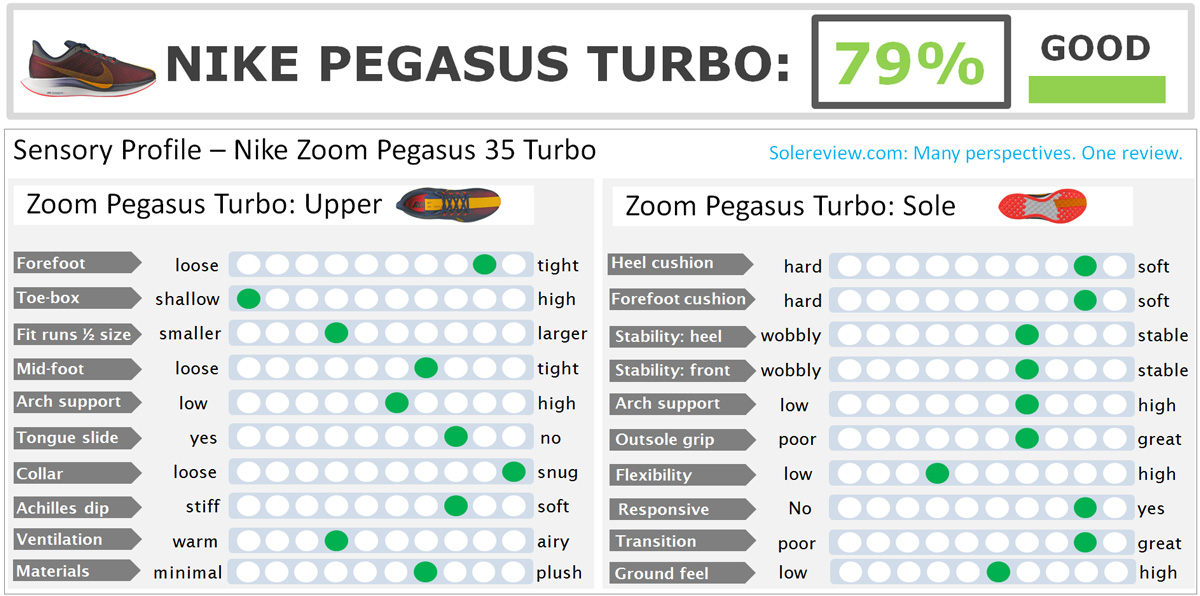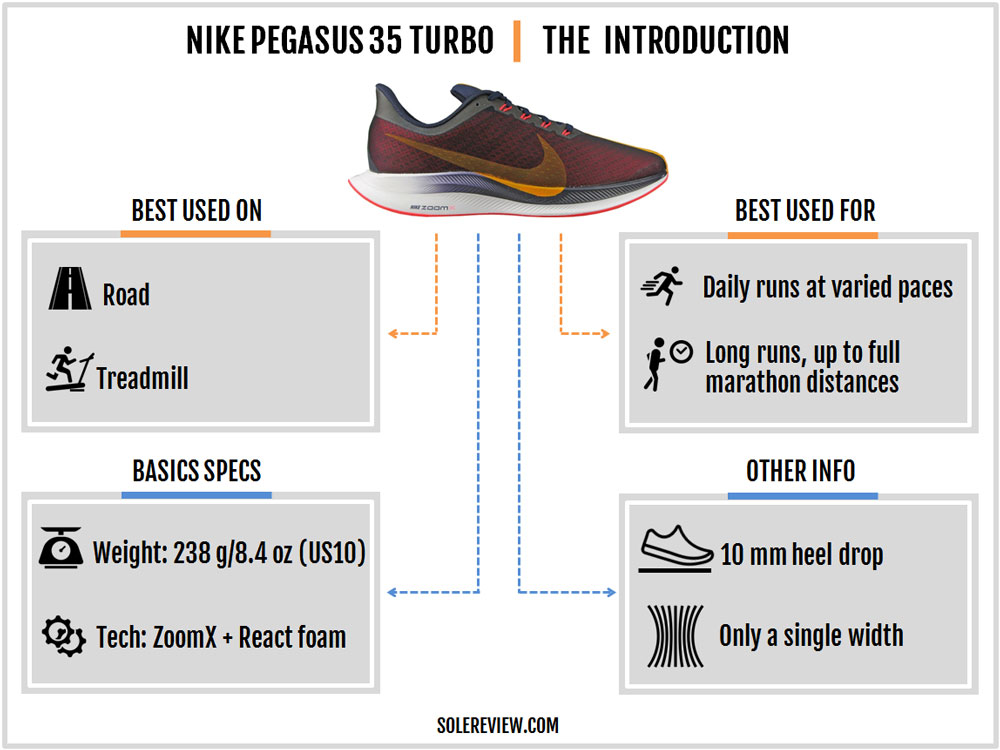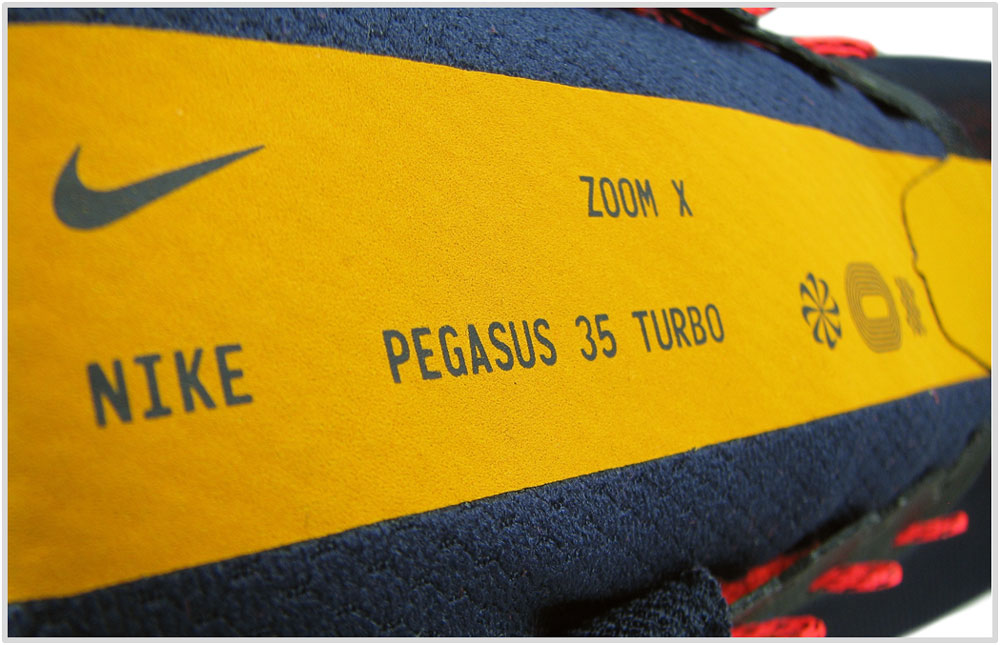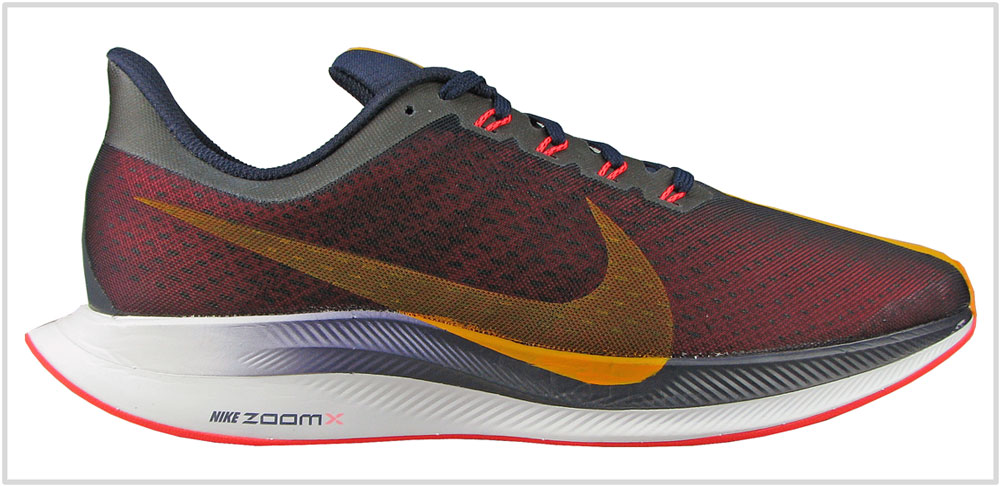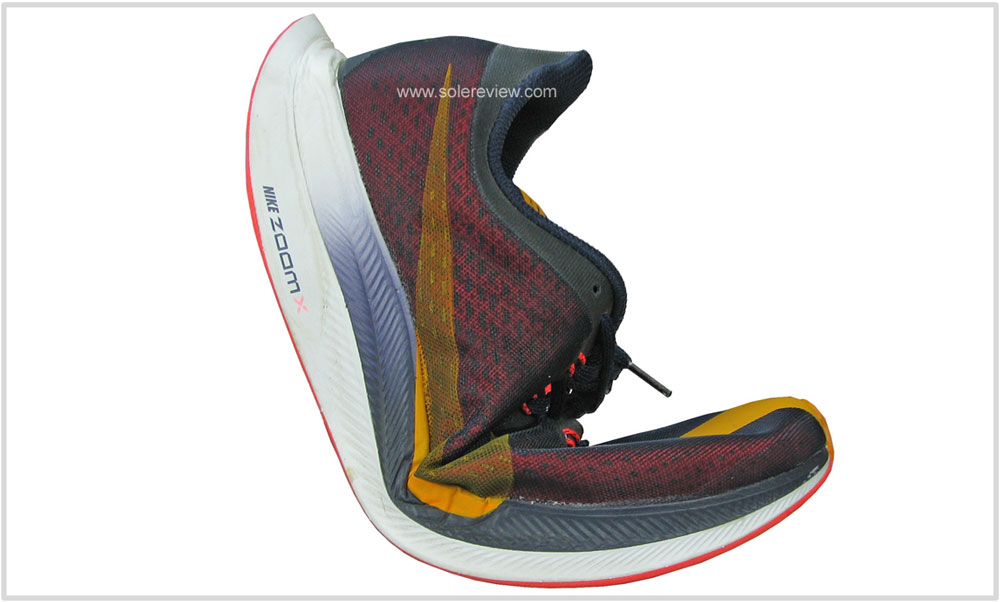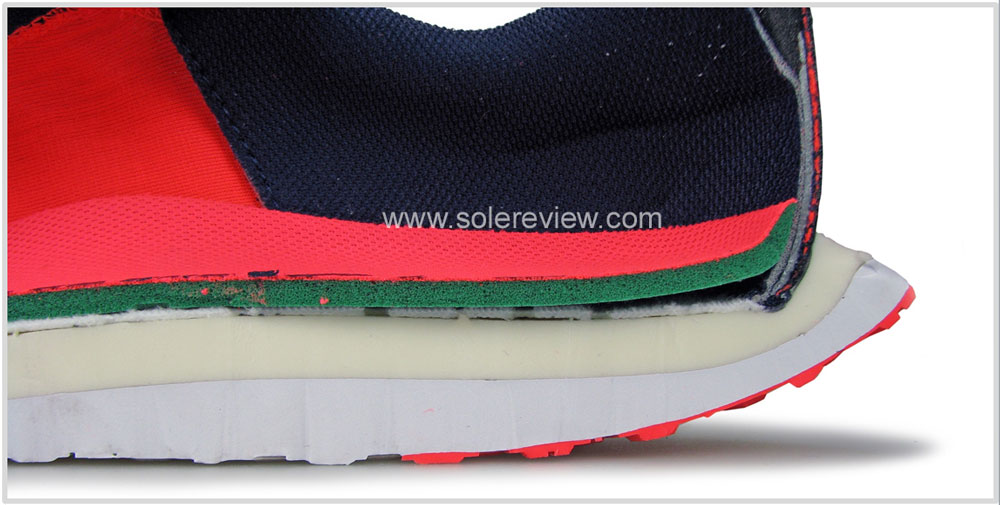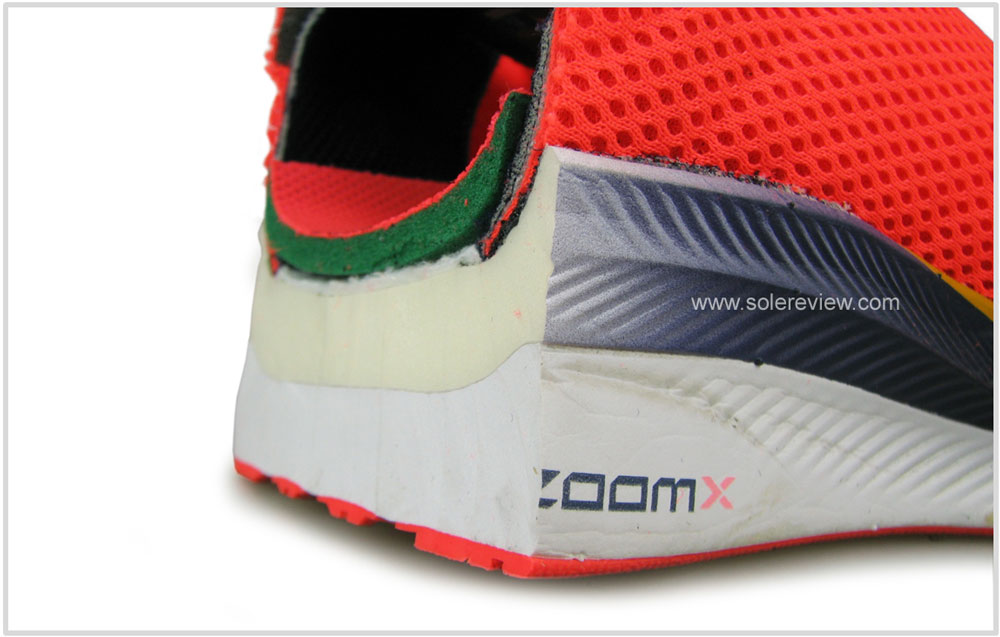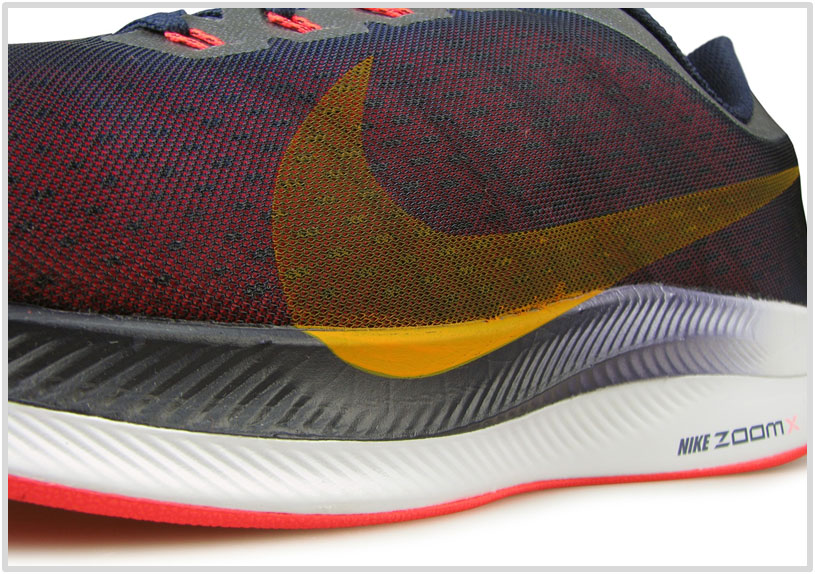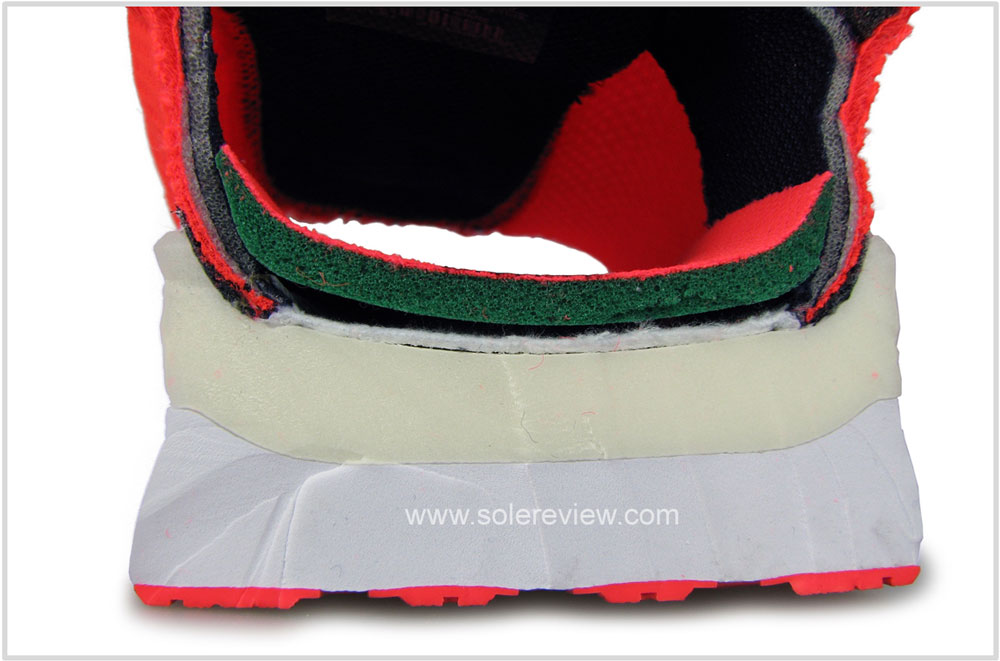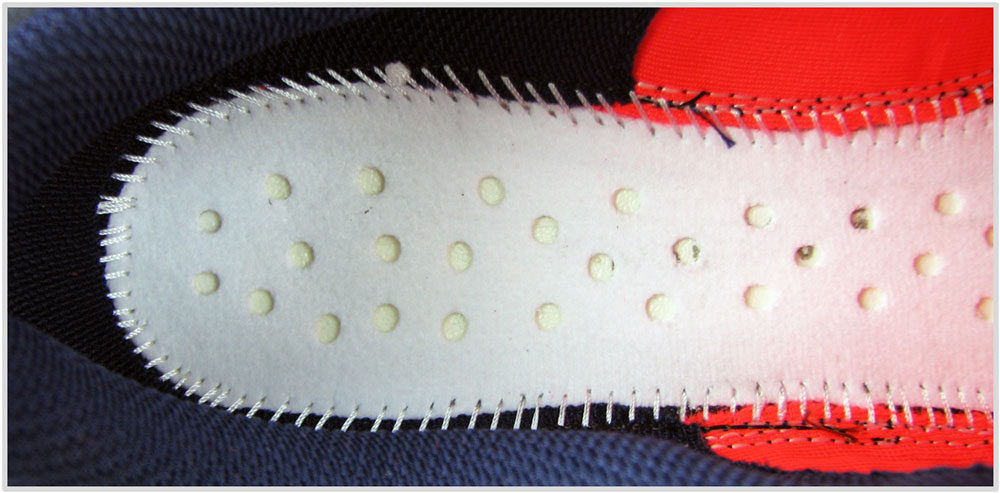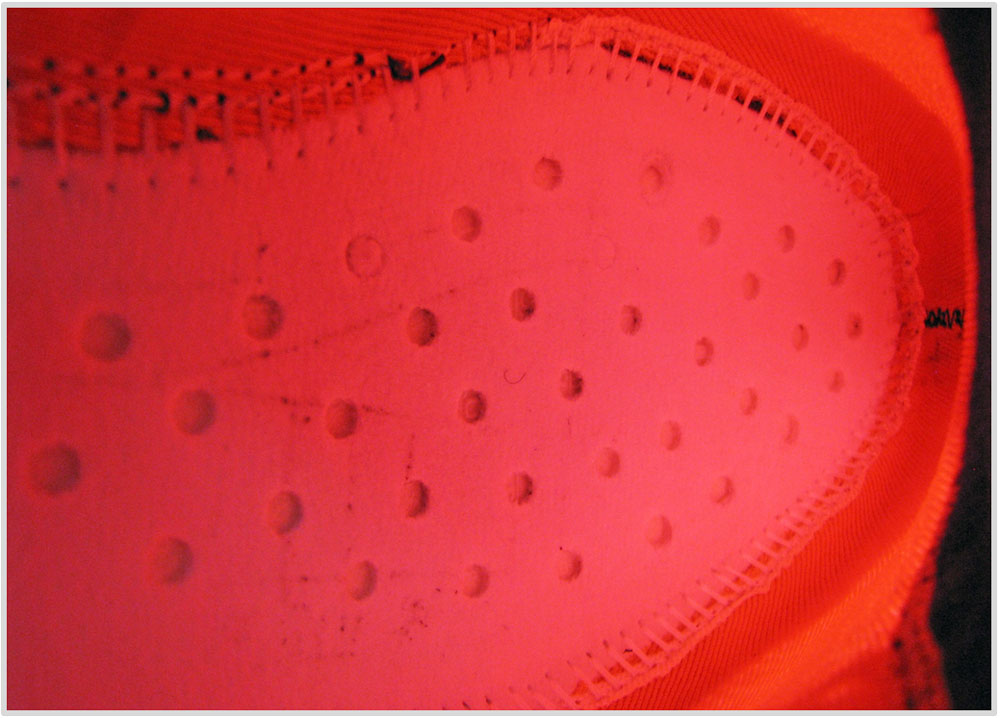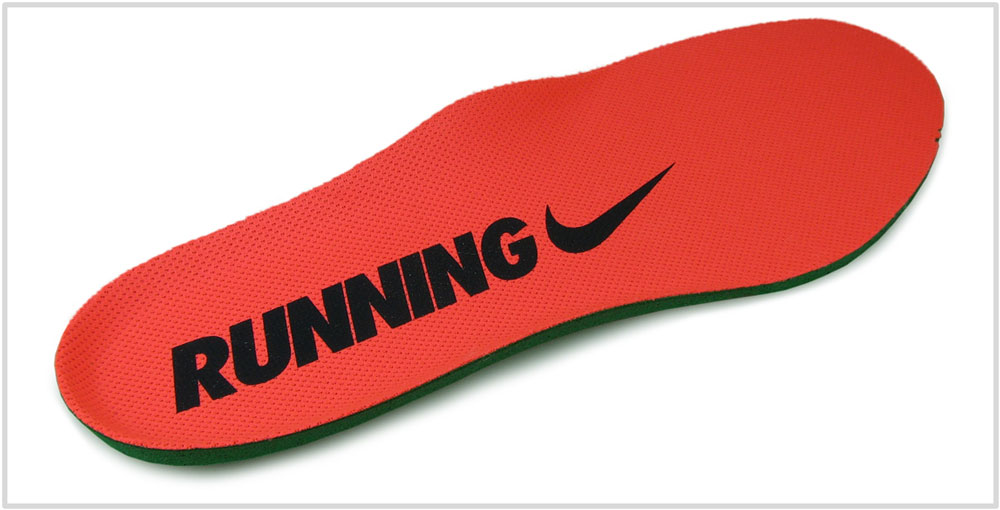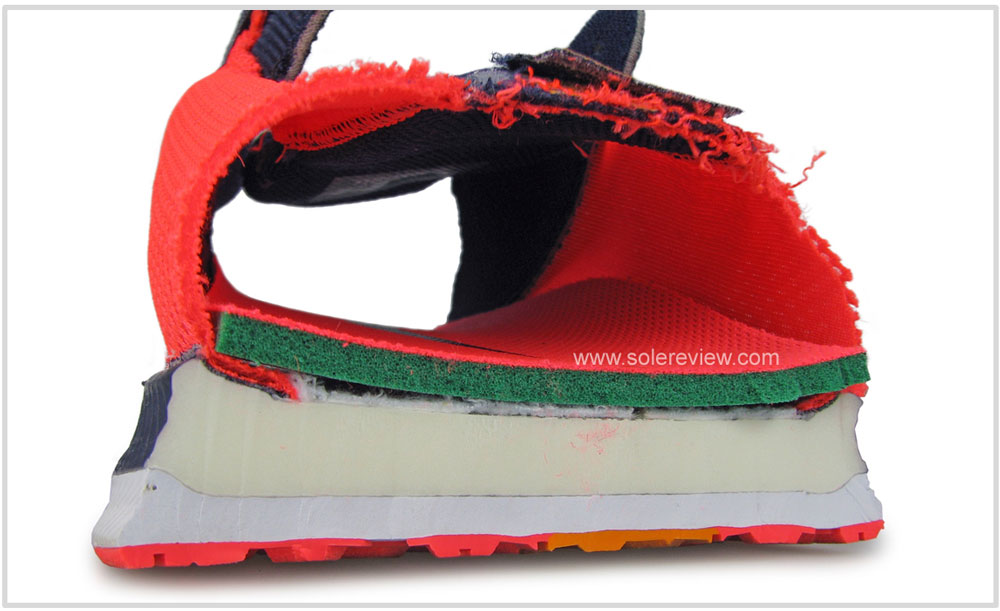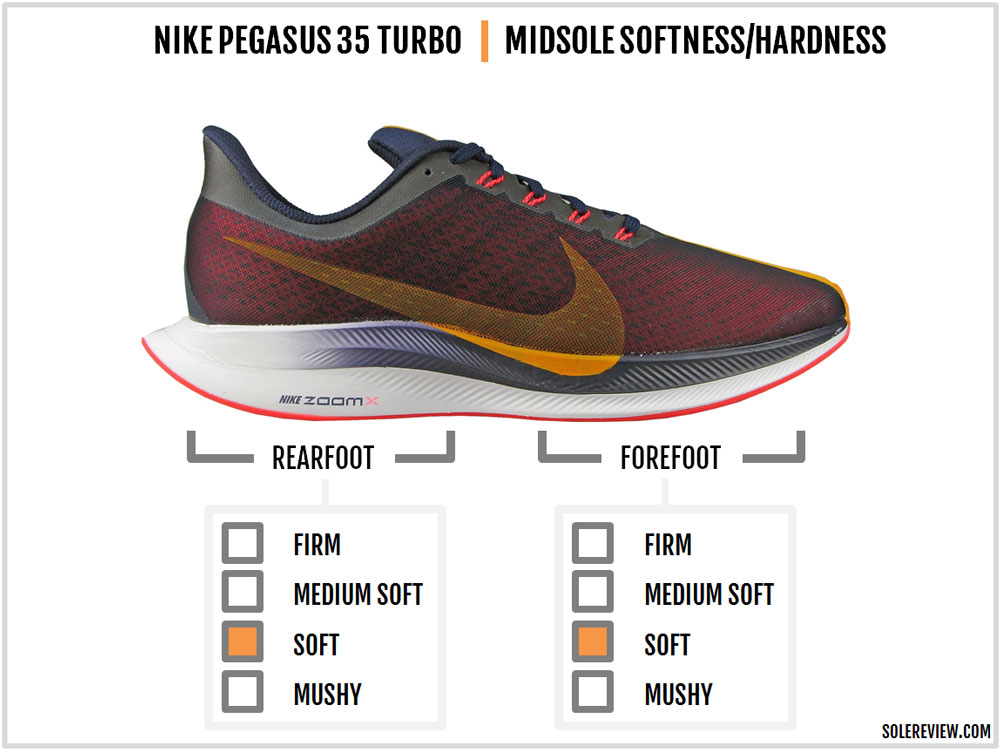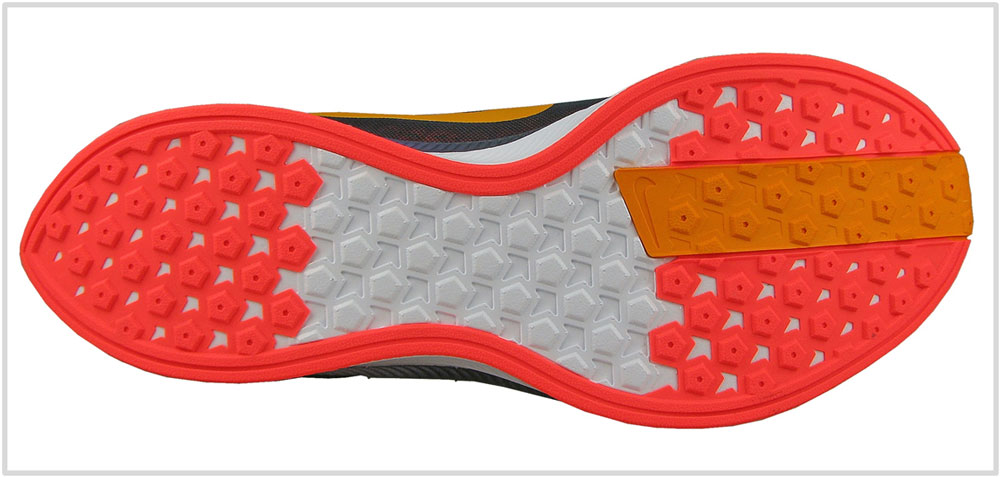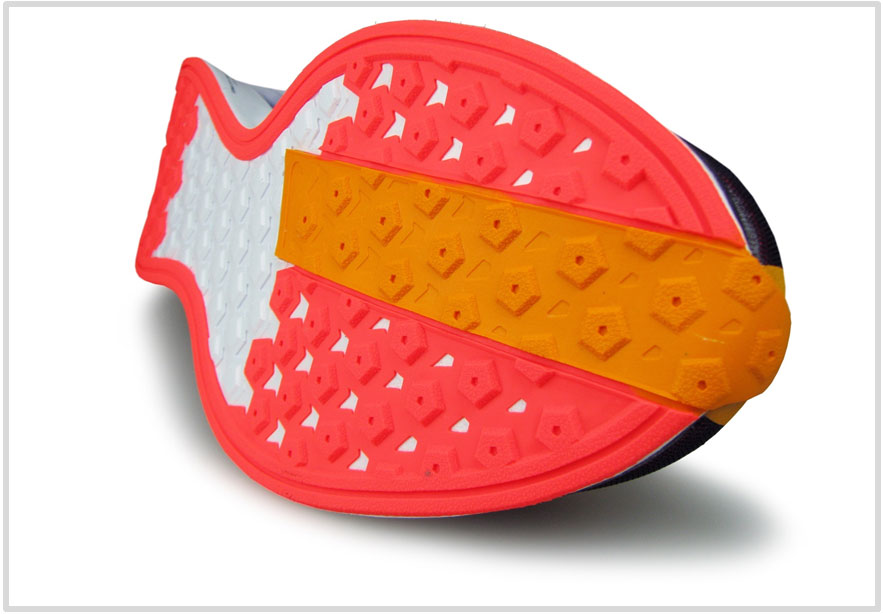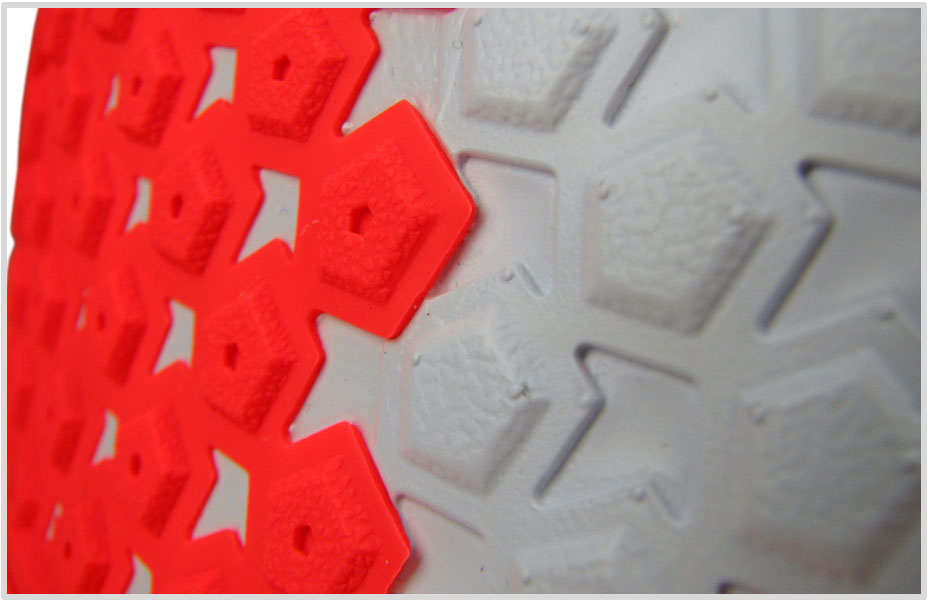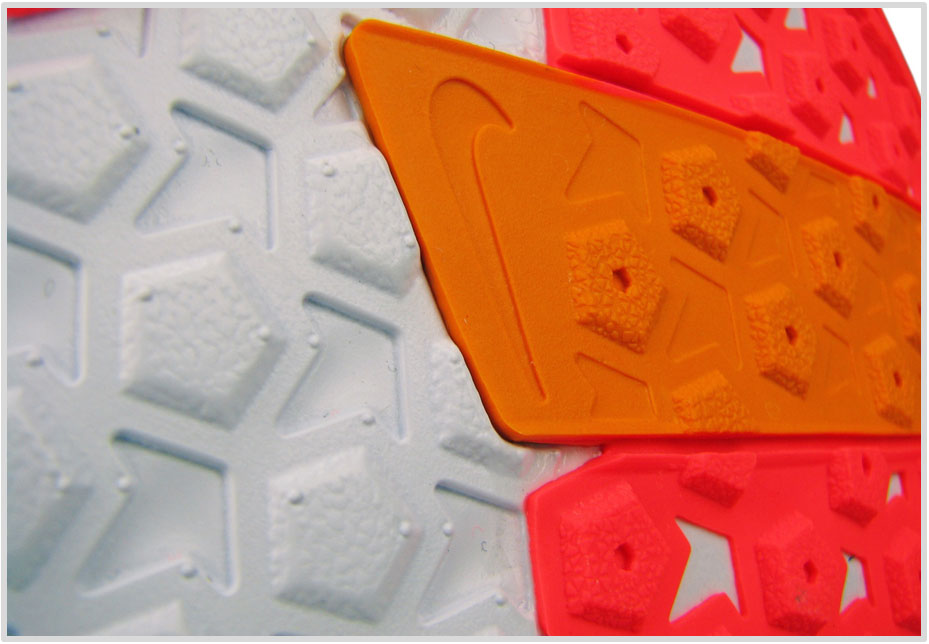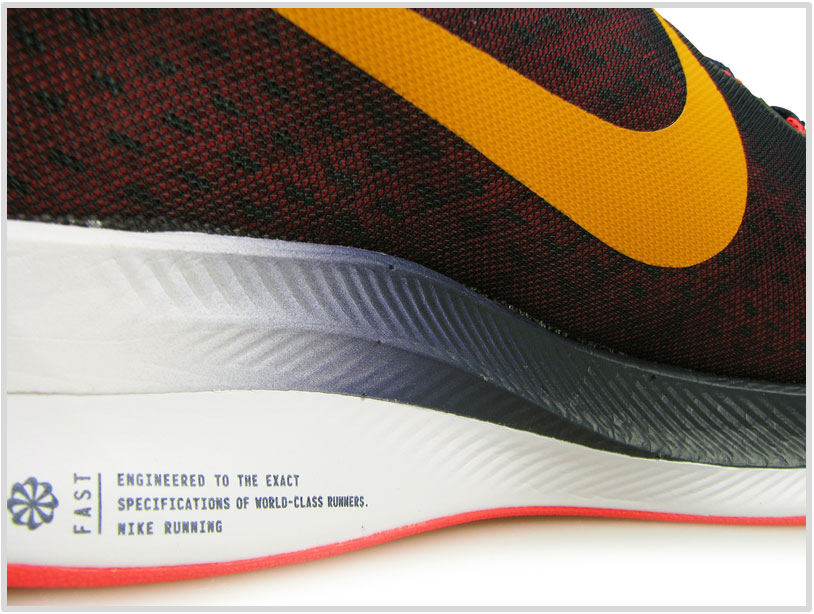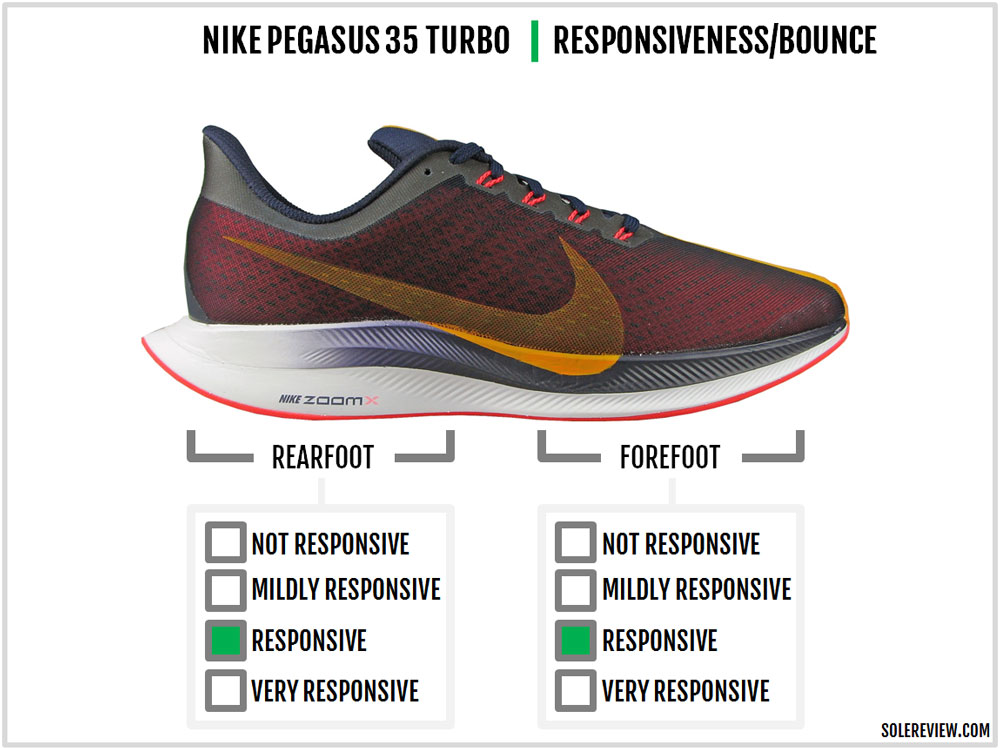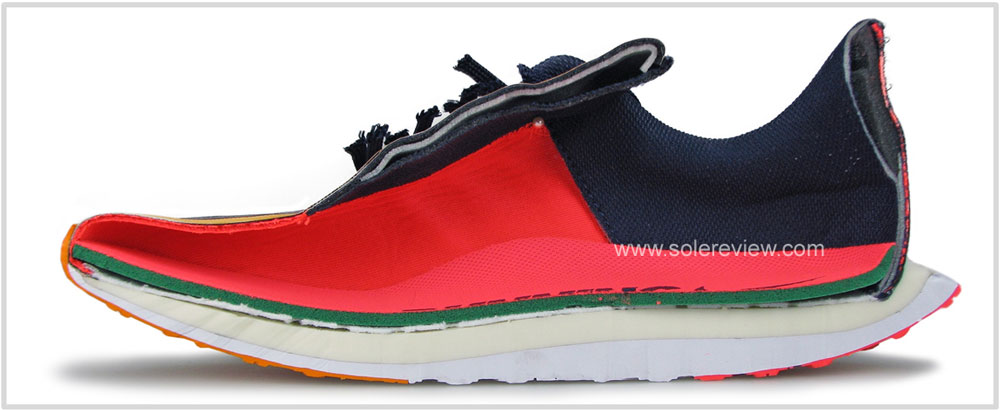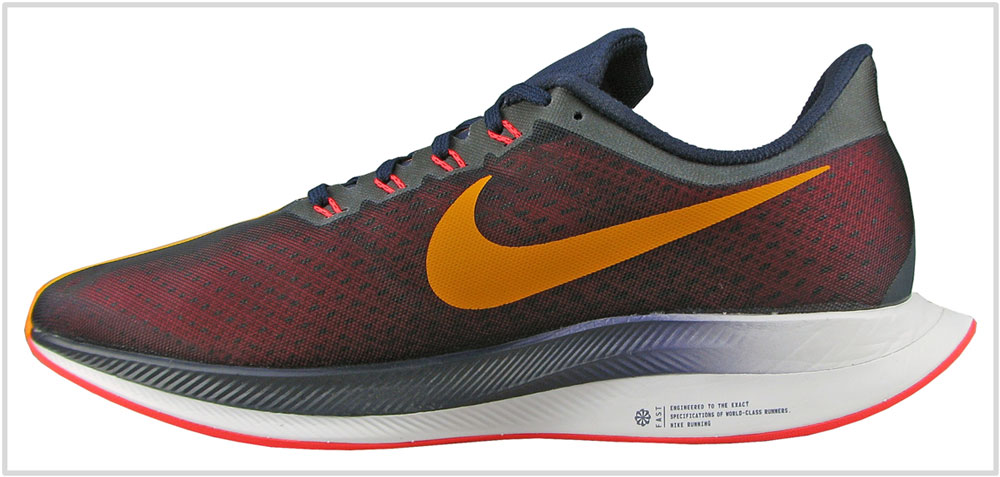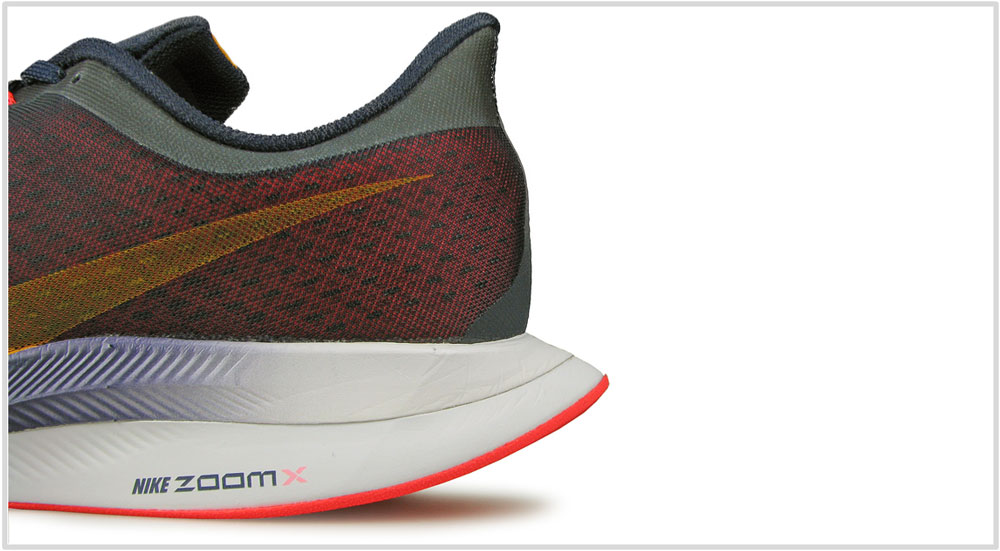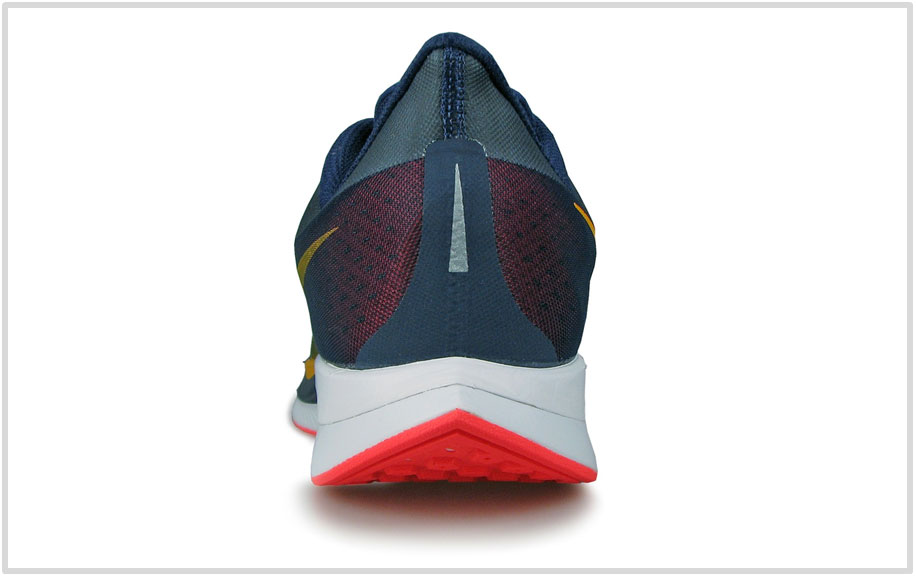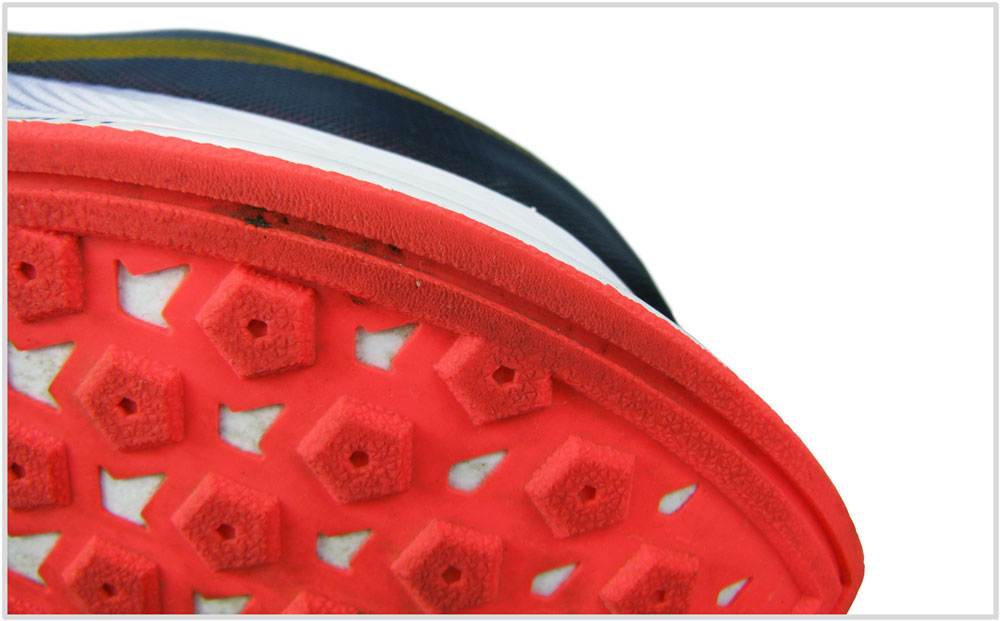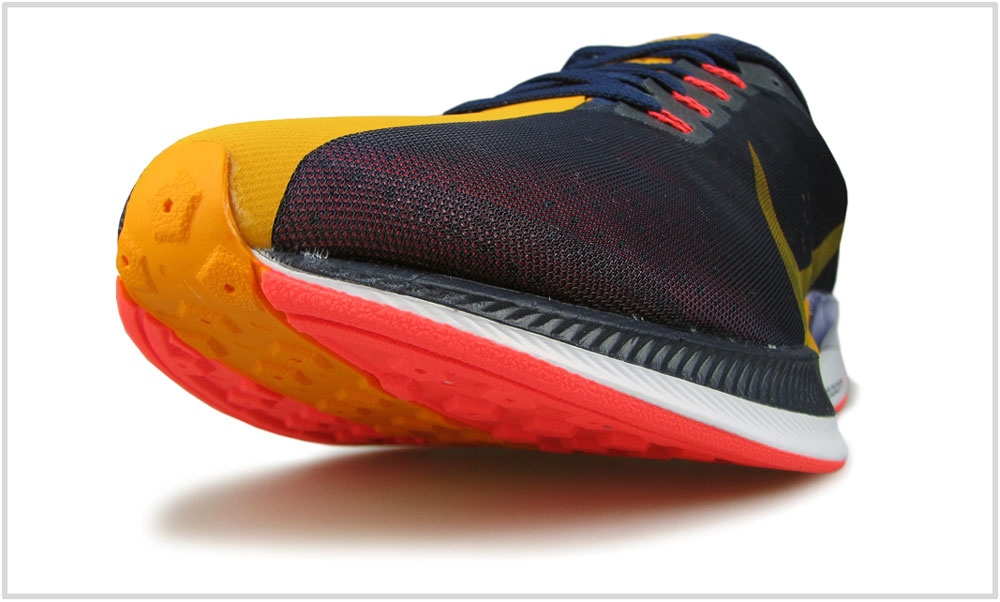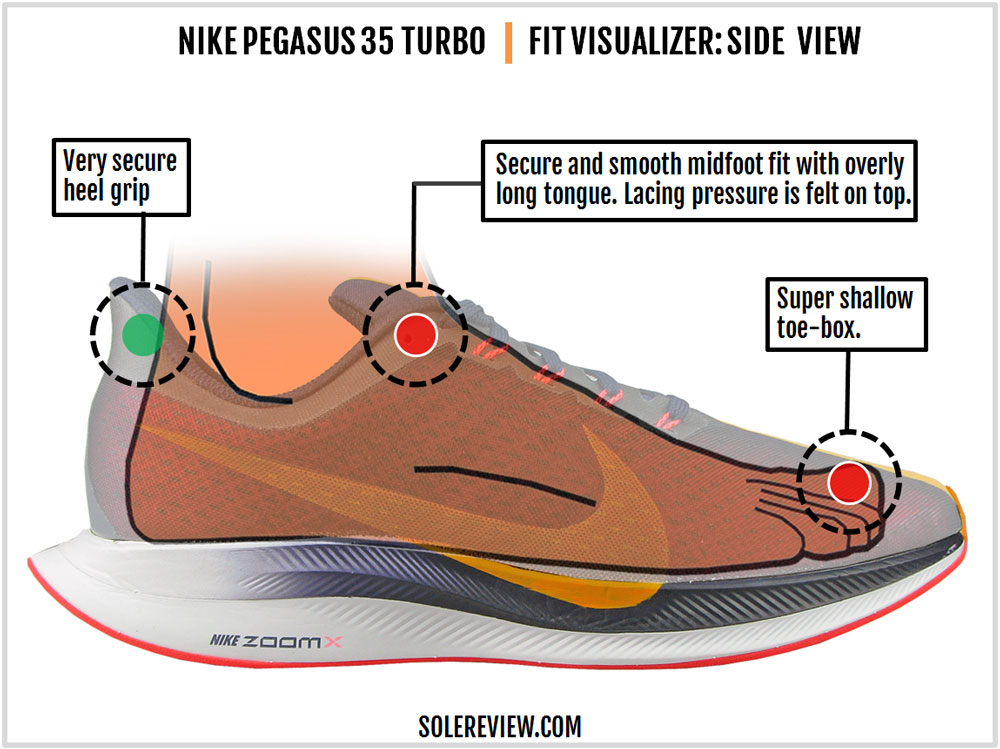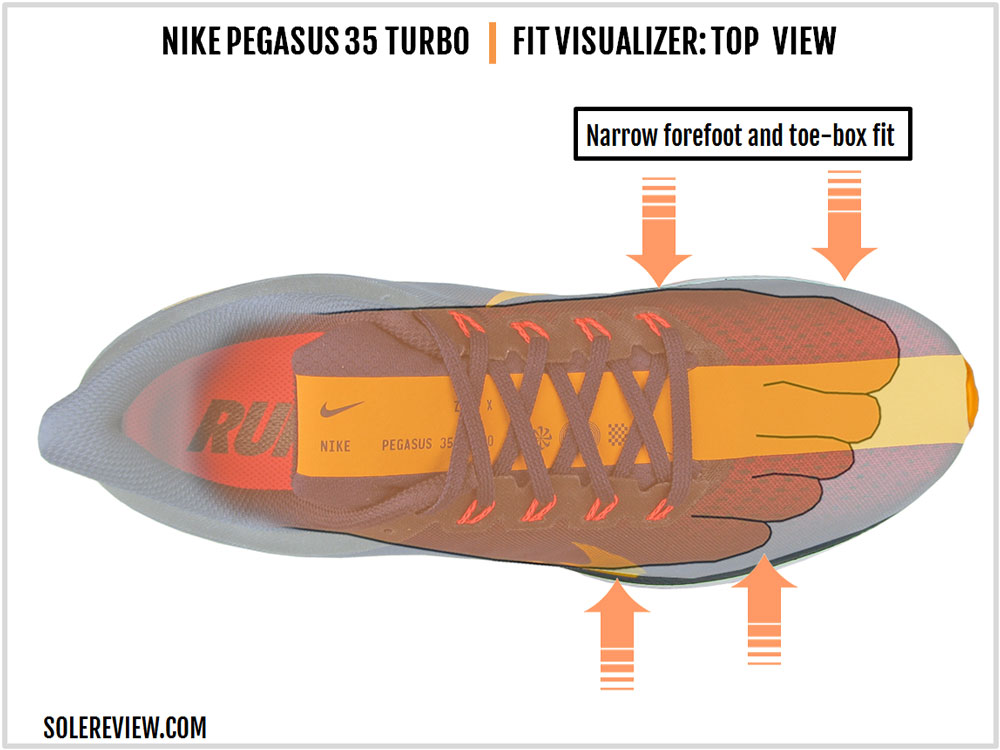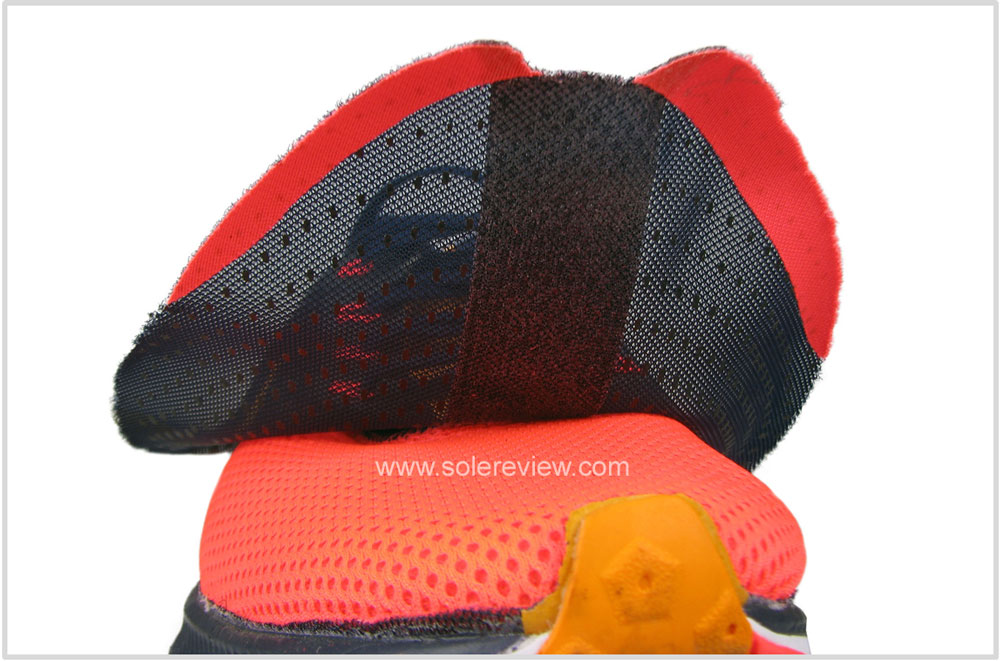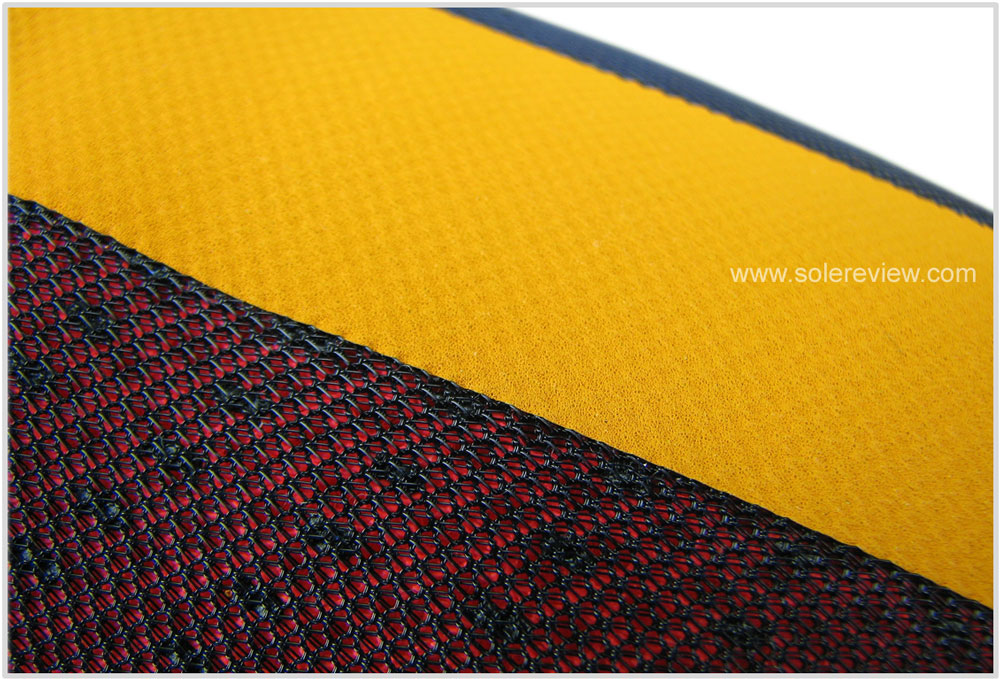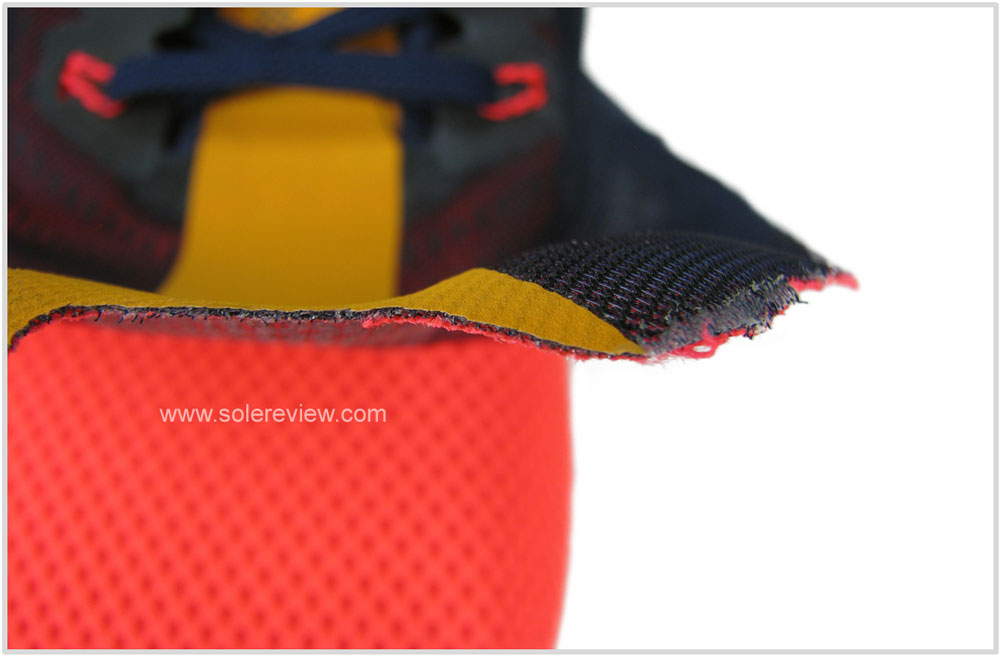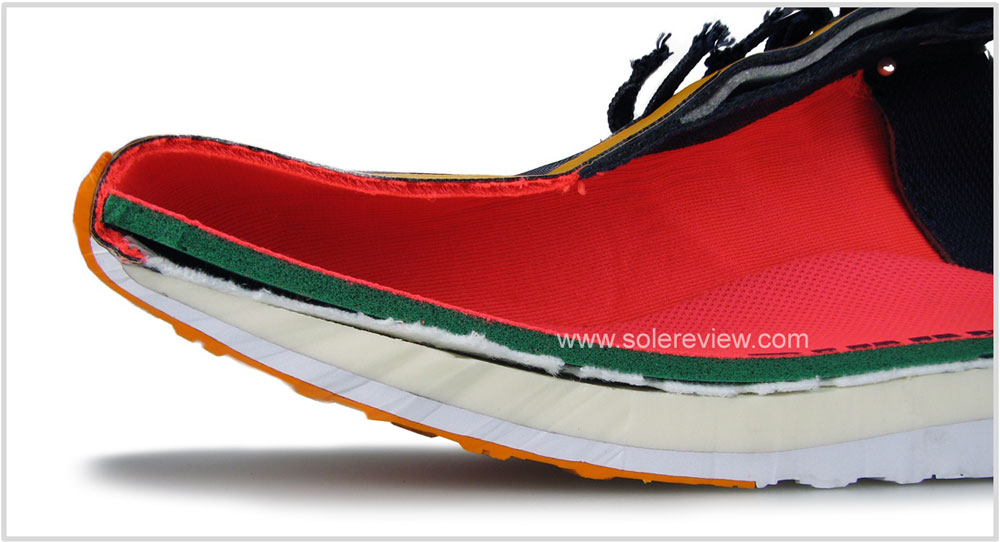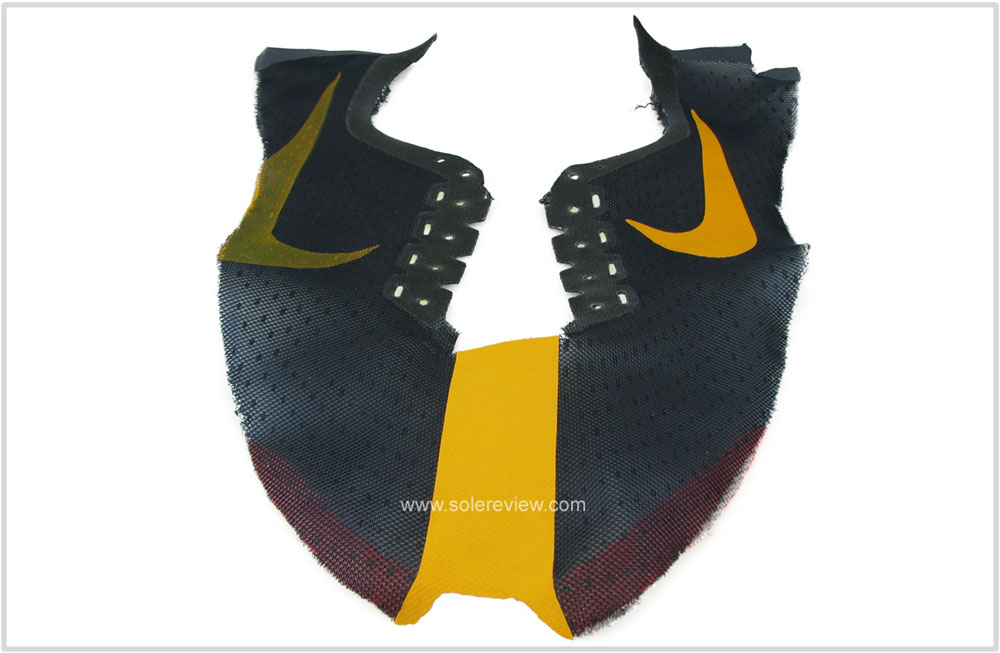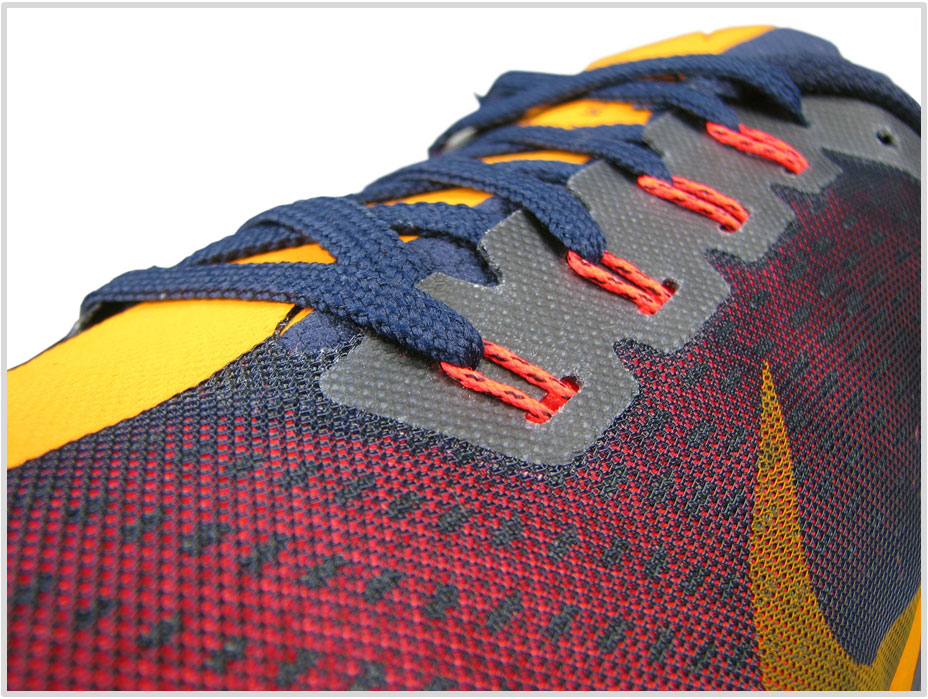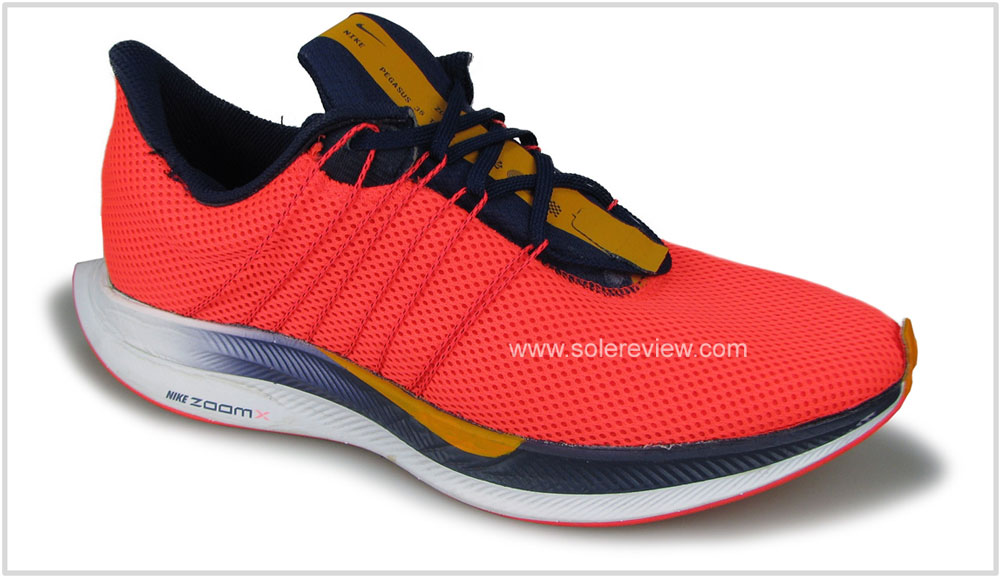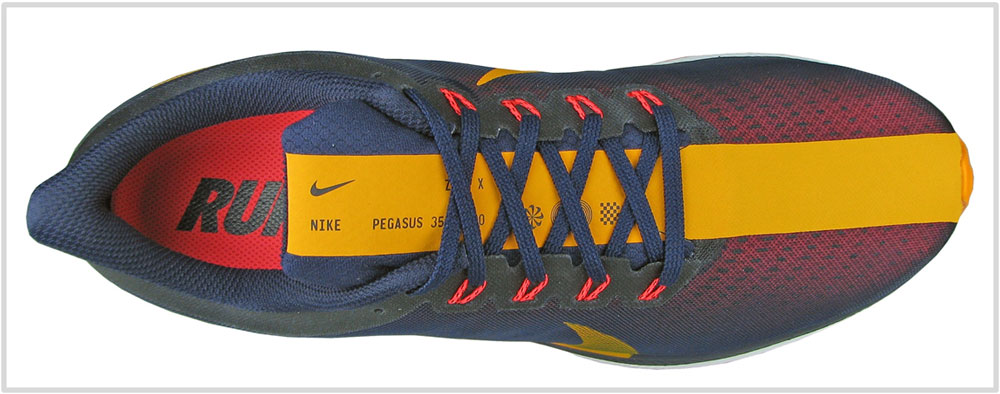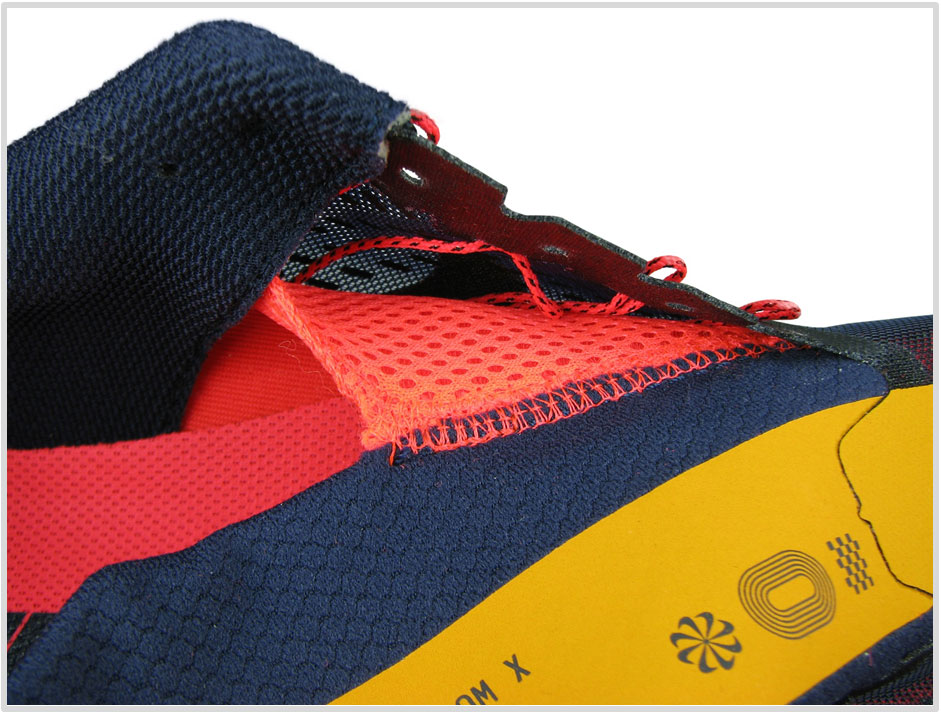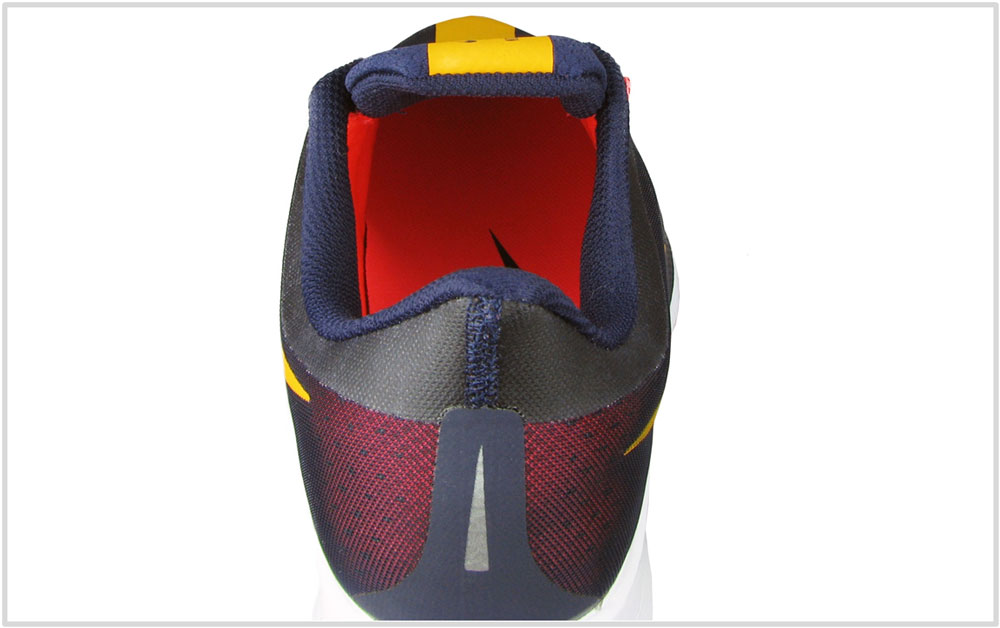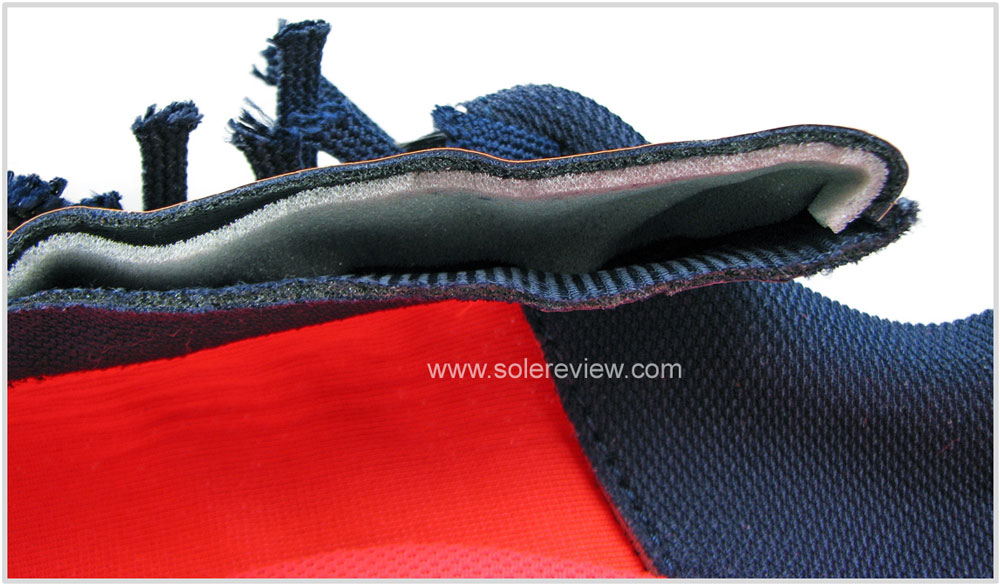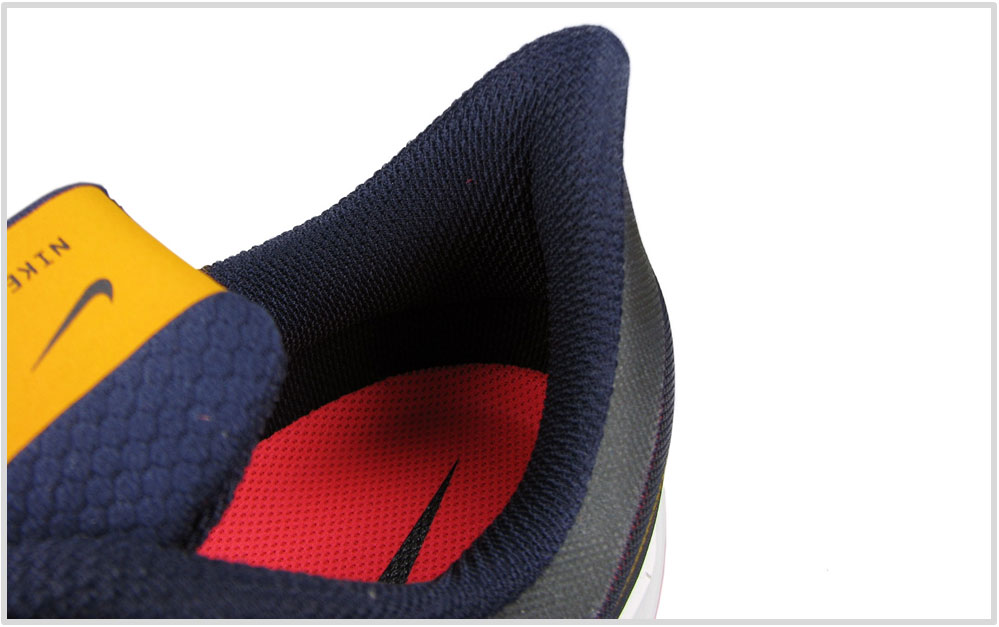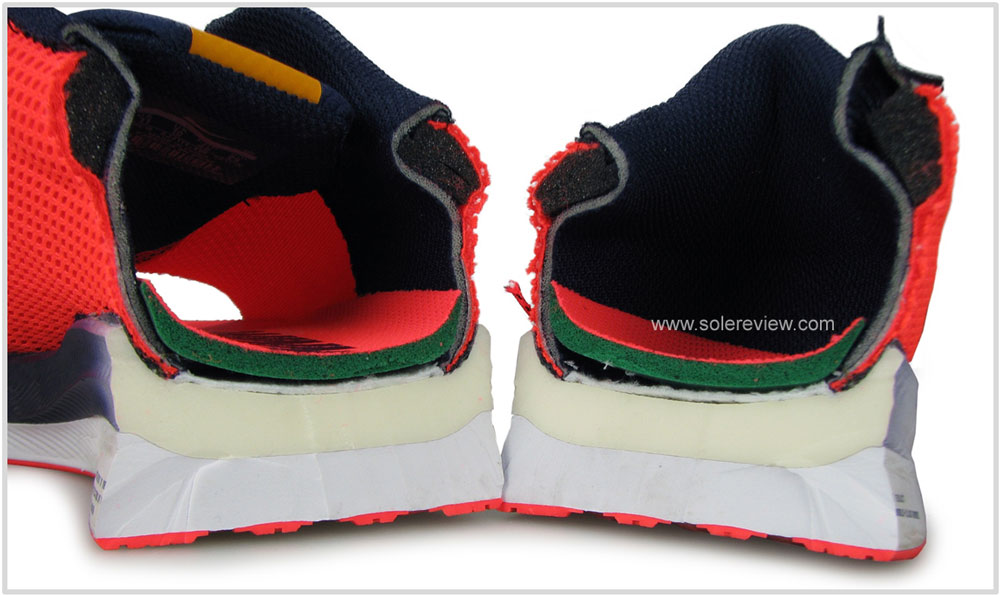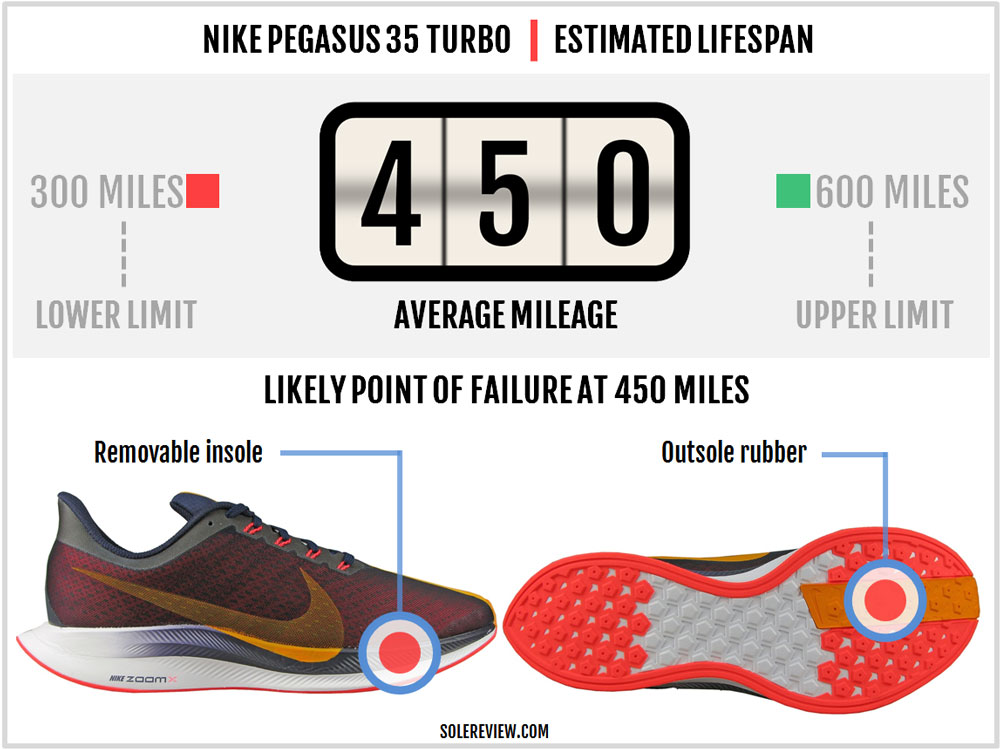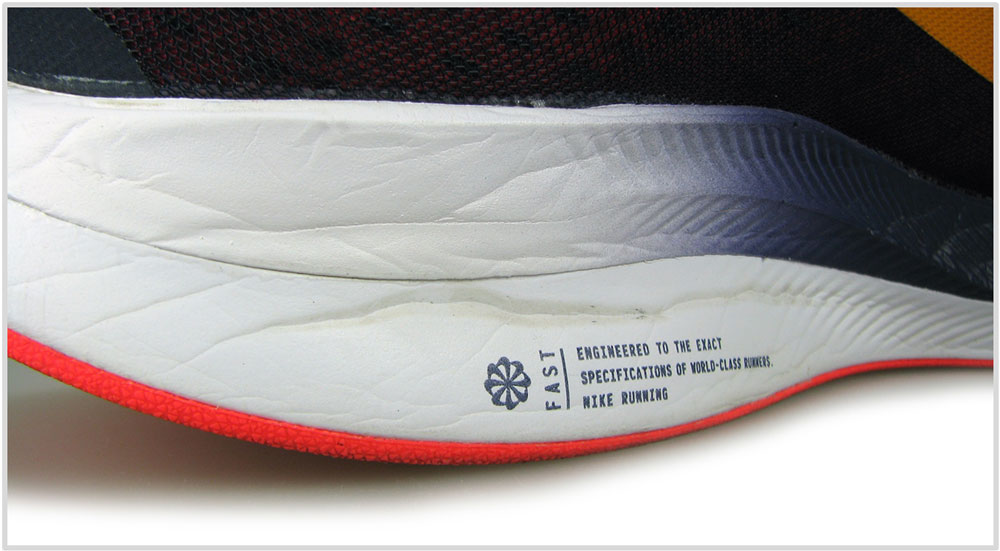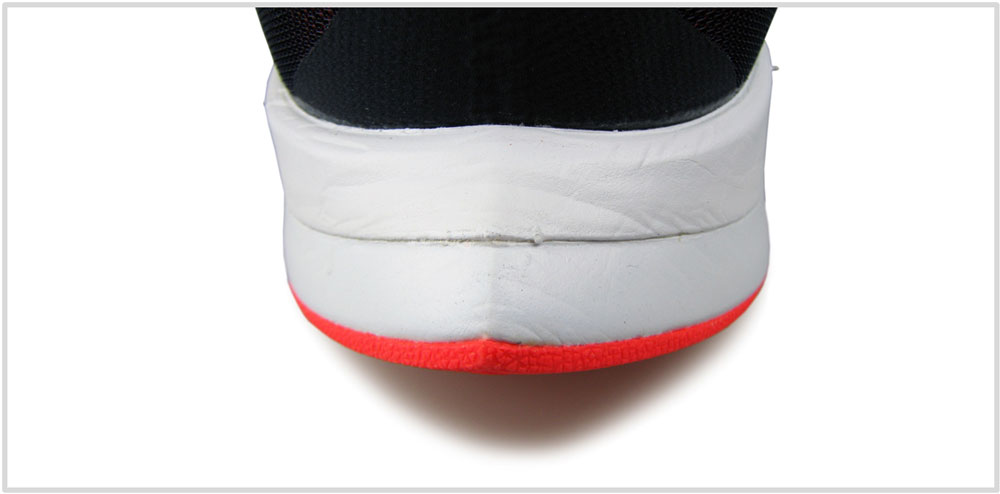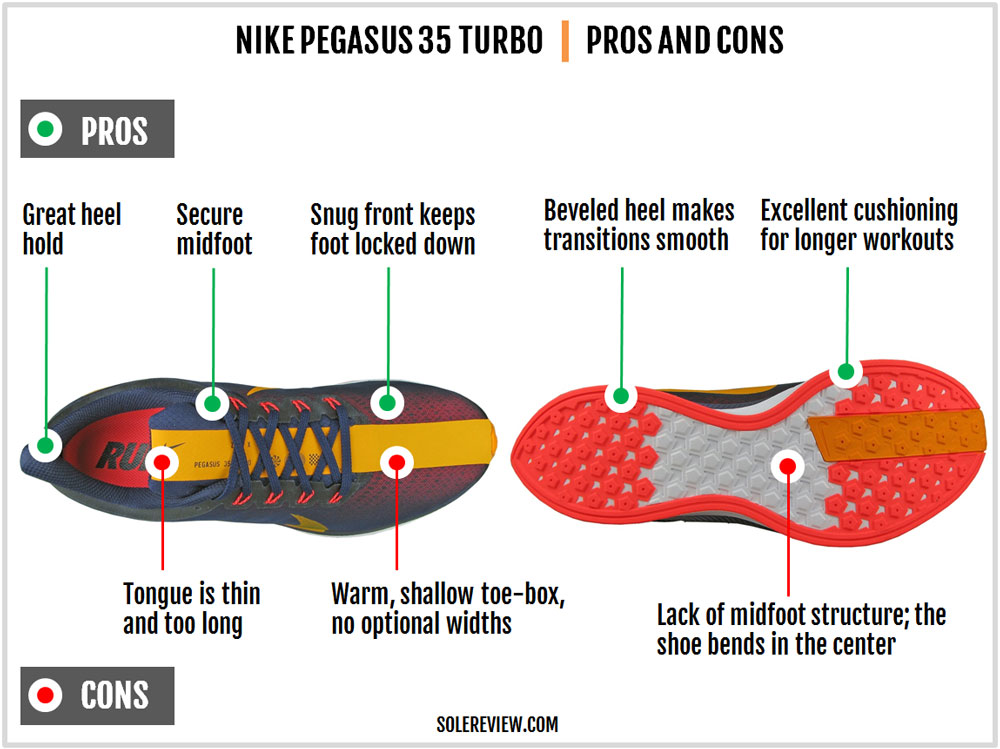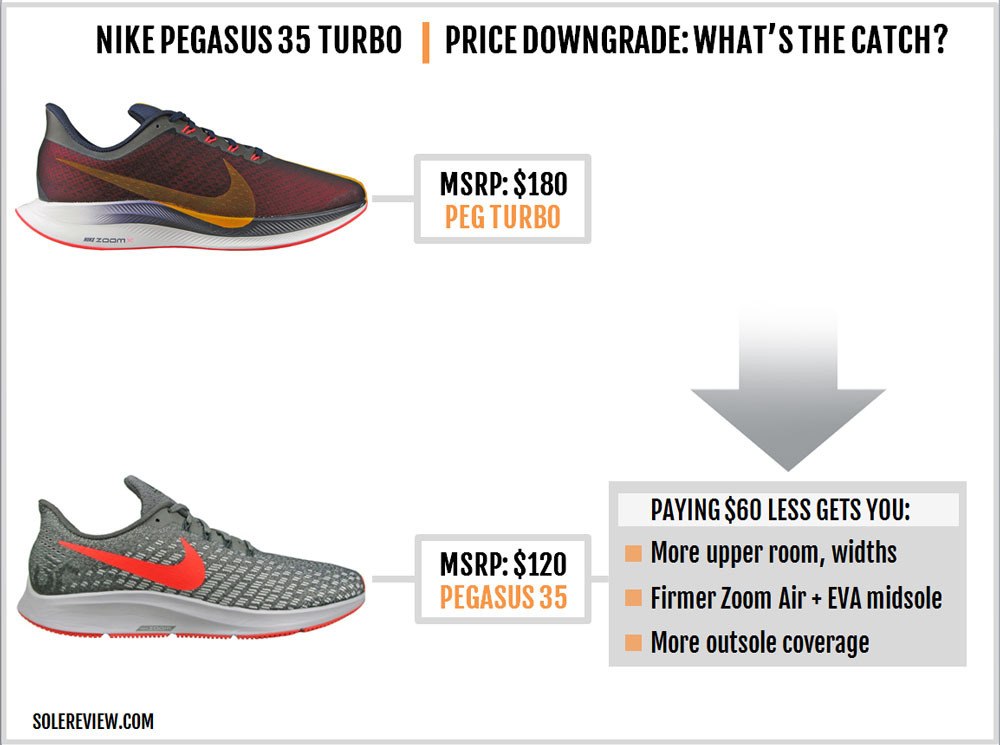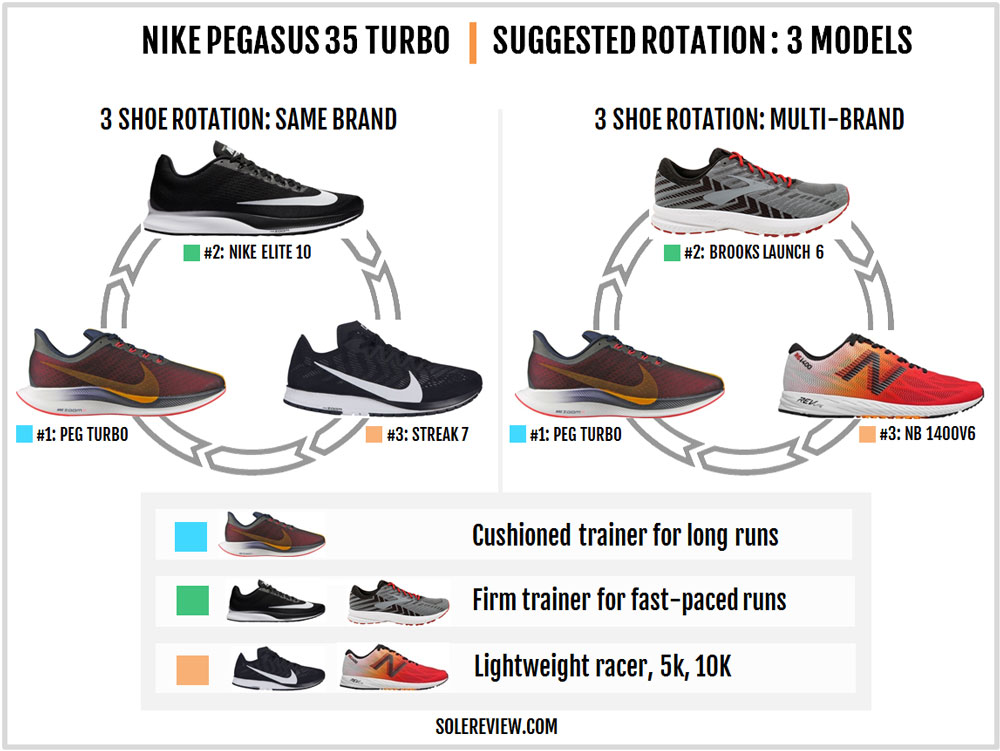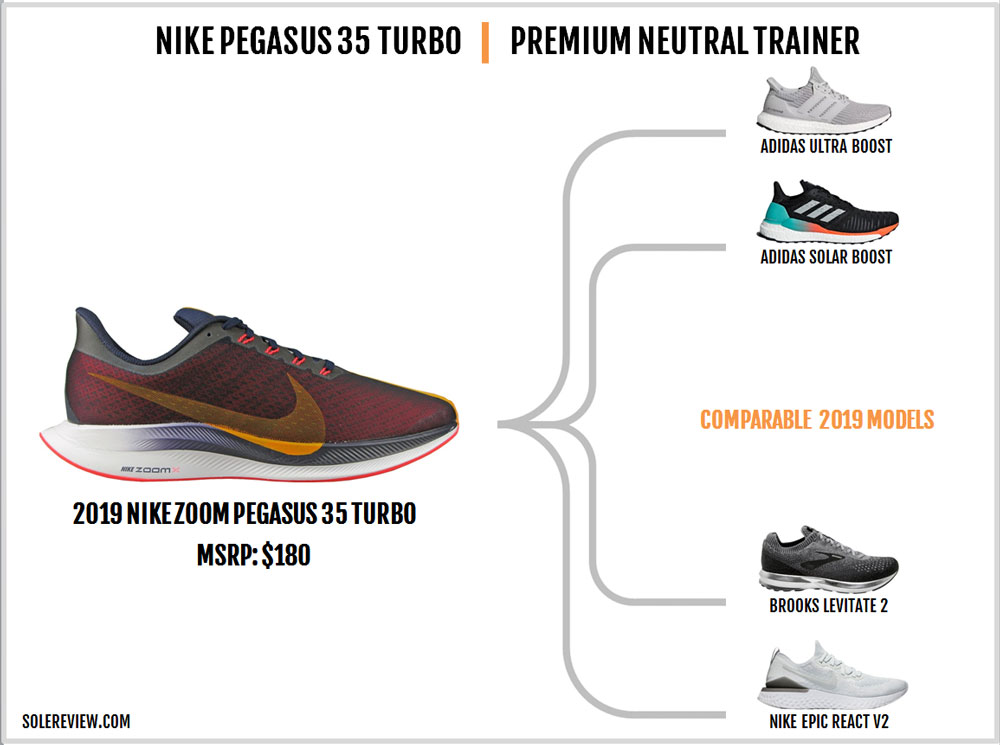INTRODUCTION
(The Pegasus Turbo 2 review is here.)
Not all delays are bad. We purchased the Pegasus 35 Turbo in early October and had originally planned to publish this review the following month. As you can see, things did not turn out as planned.
Not even close.
In hindsight that turned out to be a good thing. Our relationship with the shoe has been a love-hate-love kind, ever since our first run in the Pegasus Turbo last year. So if we had reviewed the Turbo back then, we would likely have presented a skewed opinion.
Thanks to the delay, we have over 100 miles on the Pegasus Turbo and a better-informed perspective. This is going to be a very long review, so let’s quickly complete the ritual of summarizing the shoe beforehand.
Very few running shoes have polarized opinions to the extent the Pegasus Turbo has. There’s no middle ground here; runners either love it or hate it equally. The Turbo epitomizes the intensely personal nature of running shoes. There has never been a ‘one-shoe-fits-all’ formula.
There are many areas where the Pegasus Turbo performs extremely well. Its 8-ounce weight helps it disappear over the foot during runs. The soft ZoomX foam is used judiciously over the base layer of React foam, thus imparting it with a pleasantly sophisticated ride character.
If you’re going slow, the ZoomX topping feels deliciously lively. And when you dial up the speed knob, the ride turns more efficient while the React foam prevents the shoe from bottoming out. Given the uneven spread of ZoomX, the end cushioning experience will depend on your footstrike.
Contrary to what the external paint-job suggests, ZoomX isn’t spread evenly along the length of the shoe; this results in the said difference. More on this to follow in our ride break-out.
The Pegasus Turbo is very easy on your feet when you’re running longer miles. The React foundation acts as a barrier against excessive midsole compression, and this means that the ZoomX softness and React resilience work in perfect tandem.
The heel-to-toe stacking of both the foams produces a very consistent ride quality.
The upper fits very securely, although the insides run warm due to the completely sleeved design. The toe-box is pointy and shallow, and there are no additional widths if you wanted one.
On the other hand, there are several reasons why some runners will end up disliking the Pegasus Turbo.
The snug forefoot with its shallow and pointy toe-box will be a turn-off for many. Due to the midsole design, the foot rests partially over the soft forefoot edges – while solereview did not find this to be a problem, it could be uncomfortable for some.
As a matter of fact, one of our readers wrote in his review that he was limping for a week after running in the Turbo and had to return it.
Others will find the lack of midfoot rigidity unsettling; the Pegasus Turbo’s flexes not under the forefoot but under the midfoot.
The perceived lack of durability is another reason. This has less to do with the upper or outsole lifespan – it concerns the protruding ‘lip’ of the midsole. There are scattered reports of the pointy end splitting into two.
We’ve had the Pegasus for several months now and haven’t come across that issue. We suspect that the rapid delamination is also caused by runners using the pointy end as a lever to kick their shoes off.
The $180 sticker is a contentious topic. At that price, expectations turn sky high. It doesn’t help that Nike oversells the use of ZoomX foam in the Turbo, along with hyperbolic claims like ‘…brings record-breaking speed and responsiveness to your daily training runs.’
Naturally, that sets up a comparison with the Vaporfly 4%. Needless to say, it is an unjust one considering how different both the shoes are.
But it is Nike setting up the (wrong) expectations and not the consumers. Runners will be disappointed to discover that the Peg Turbo isn’t a ‘fast’ shoe in neither the Vaporfly, the Zoom Elite or the Streak 7 sense.
Many of us will also compare the Turbo to the Epic React, a cushioned shoe which is cheaper than the Turbo. That comparison is a pertinent one, considering that even the Pegasus Turbo has a fair amount of React foam in it.
And for us, that’s the elephant in the room – the way Nike markets the Pegasus Turbo. On the product description page, Nike conveniently omits any mention of React foam and instead advertises only the ZoomX foam. This is blatantly misleading.
And it’s not like there’s a ‘thin’ layer of React inside the midsole. At the latter’s thickest point, the stack distribution of React and ZoomX is 55:45. Under most of the rearfoot, the split between React and ZoomX is 50:50.
We cut open our pair of the Pegasus Turbo (for which we paid full retail) to show you exactly what we mean.
Ironically, the section where it says ‘ZoomX’ isn’t made of the namesake foam but React. This is very strange and somewhat dishonest; why would Nike do something like this? Putting React inside the Pegasus Turbo doesn’t make it an inferior product.
If anything, React adds tangible value to the ride character. Having a softer ZoomX foam over the relatively firmer helps the Turbo achieve the perfect balance between cushioning softness and resilience.
On its merits alone, the Pegasus Turbo excels on the road. If you don’t mind the lack of toe-box room and midfoot rigidity, then the Turbo is a great daily neutral trainer which goes very easy on the feet even after 15+ mile runs.
It’s not a shoe for ‘record-breaking speed’ (as Nike puts it) but the Turbo doesn’t slow you down either.
DESIGN AND RIDE EXPERIENCE
To really understand what makes the Pegasus Turbo the shoe it is, let’s take a detailed look inside. There’s some make-up paint applied on the midsole, so that gives you some idea of how the Zoom X and React foams are distributed inside.
The foam at the top is the softer Zoom X foam. There isn’t much going on above it. There’s a very thin layer of fabric with perforations, similar to what adidas uses in many of their Boost models.
A removable insole of a faux-Ortholite kind is used inside the Turbo.
At this price though, Nike should have used a better quality of insole and not the same one used in the regular Pegasus 35.
What is the Zoom X foam made of? We’re not sure because Nike doesn’t say and the patents are vague. Our best guess based on the Zoom X’s ride properties and the lightweight build is that it could potentially be a Pebax foam variant. The midsole’s smooth, molded surface below the lasting also bears a slight resemblance to the Reebok Floatride’s texture.
The tear-down also highlights an area of particular interest, namely the forefoot stack. Unlike the rear and the midfoot where both the foams are almost evenly stacked together, the forefoot is mostly Zoom X (see above) with only a thin layer of React underneath.
This explains why the forefoot feels softer than the rest of the midsole. This makes the Turbo an excellent shoe for forefoot strikers seeking a blend of cushioning and responsiveness. The React underlay prevents the forefoot from turning mushy and the thin outsole rubber provides protection and adequate traction.
We’ll cover the upper fit in much detail later. For now, we’d like to highlight that the shallow forefoot pins the foot down for better forefoot connection and responsiveness. Realize it or not, even the Lunaracer 4 and LunarTempo (to some extent) used a similar design strategy.
Of late, Nike has switched to thinner outsoles with a latticed geometry, as evident on the Pegasus 35 and Vomero 14.
In the Turbo’s case, the midfoot is left exposed while the front and rear is covered with waffles lugs. A single solid strip runs down the forefoot center which aligns aesthetically with the yellow strip on the upper.
With a lot of visible React foam, it’s easy to miss the fact that the outsole is a single-piece unit – the front and rear are connected by a set of midfoot rails.
Leaving exposed areas of foam between the lugs makes the outsole easier to flex during transitions. Like the regular Pegasus 35, the outsole slabs are thin so that adds to the soft under-feel.
As a running shoe, the Pegasus Turbo is very versatile. At slower speeds (10 min/mile, 6 min/km or slower), the longer compression cycle of the midsole brings out the soft, responsive feel of the midsole. The fabric lasting is thin and perforated so the Zoom X foam is instantly accessible upon weight-loading.
Faster runs (7 min/mile or under 5 min/km ++) result in a ride experience of a different kind. The ZoomX foam is quick to compress and snap back into place, so the sensation of softness is replaced by that of efficient responsiveness.
We also have to keep in mind that there’s a firmer React layer under the Zoom X goodness so the latter doesn’t bottom out during the gait cycle. The Zoom X + React combination delivers a ride quality which is cushioned and efficient at the same time.
A softer foam core over a firmer base helps isolate ZoomX’s responsive cushioning in a more effective manner. So as far as marketing of the Turbo goes, Nike need not hide React under the covers. Instead, they should advertise it.
Also, the Turbo’s ride feels sophisticated. For instance, the Epic React has a very deep and dense cushioning but feels one dimensional when compared to the Peg Turbo’s dual-foam stack. That said, our opinion is that the Epic React (and its variants) is better suited for heavier runners because of its 100% React foam composition.
One aspect where the Pegasus Turbo outperforms its peers is its long-distance capability. The extremely comfortable midsole is also the part of a sub-9-ounce package. To put things in perspective, the New Balance 1500V4 road racer weighs nearly the same.
The lightweight build disappears on the feet during runs of 10+ miles and the Turbo goes very easy on your feet. You’ll likely to come back home with less foot fatigue than most running shoes.
There is plenty of distributed cushioning instead of the rearfoot-focused softness which many running shoes tend to have. The midsole weight is also well balanced between the rearfoot and forefoot, making the Pegasus Turbo feel lighter than it actually is.
The consistent rear-to-front stacking of the ZoomX and React foam is evident from the teardown images; this design helps deliver very smooth transitions.
Is the Pegasus Turbo a ‘fast’ shoe in the sense we’re all familiar with? It is debatable, because that depends on which shoe you’re comparing the Turbo with. A like-to-like with the Vaporfly 4% is moot because of the VF’s internal plate.
Call us traditionalists if you will. But the Turbo isn’t a fast shoe in the same sense as the Streak or even the Elite 10. Rather, the Peg Turbo is a very lightweight and cushioned trainer with a non-mushy feel.
At some level, the Turbo reminds us of the original Hoka Clifton – plenty of long mileage cushioning without the weight penalty.
Let’s be more specific. If given a choice, would we pick the Pegasus Turbo for a 10K race at a pace of 4:30 km? Or a shorter 5K race at a speed of 4:00 km?
We’d say no. The Pegasus Turbo is simply too soft for those kind of runs. Our choice for such speed-distances would be a regular road racer or racing flat. The kind of running shoes found here and here.
On the other hand, the Pegasus is a good fit for racing half or complete marathon distances. The Turbo’s lightweight build and economical ride fares a lot better than most cushioned trainers. Under such circumstances, one needs a combination of comfort and efficiency, and the Pegasus Turbo has that in spades.
The raised heel spring delivers much more than mere cosmetic value. For rearfoot strikers, the rocker shape promotes good footstrike – namely on the inside rearfoot, away from the edge. The wear pattern can be observed in the reference image above.
There are a few not-so-good things about the Pegasus Turbo’s ride quality. The first happens to be the absolute lack of midfoot rigidity; so much so that the midsole bends in the center instead of the forefoot. The reason is pretty obvious. The midsole lacks outsole coverage, thus turning it into a path of least resistance during flexing motions.
Secondly, the midsole has a pointy taper towards the front. This means that the forefoot rests on a narrow base and you can feel the edges of the midsole under the foot.
The edges are made of the soft Zoom X foam so it isn’t (usually) an acute concern if you’re running straight. But if your running route involves sharp bends, then the edges are felt as the foot moves sideways while entering a turn. The Turbo’s tongue has a track logo printed over it, but no, thanks. We’ll pass.
The Turbo’s zero midfoot support and the narrow forefoot base has led to at least one of our readers to experience pain and subsequently return his shoe. The narrow forefoot and the shallow toe-box are also causes of potential discomfort during runs of 10+ km.
Even the significantly less expensive Pegasus 35 is more supportive and flexes in the right place. The Zoom Streak 7 comes fitted with a midfoot support insert too. So why leave the Turbo out?
Just know that there’s a chance these factors might end up being a deal-breaker. Buyer beware, as they say.
Overall stability levels are fair, though far from perfect. The upper midsole is soft and the upper lacks substantial support features. The Pegasus Turbo performs well during linear running on road or the treadmill.
If you just want to use the Pegasus 35 Turbo as a casual all-day shoe, then it checks most boxes. We say ‘most’ because of the cramped toe-box. The ride quality combines upper-level softness with a rubbery React platform for great all-day comfort. The midsole feels deliciously lively at walking/slow speeds.
UPPER FIT QUALITY
The shallow toe-box of the Pegasus Turbo is the first thing which anyone notices when wearing the shoe for the first time. The sensation lingers on for a few days till one (somewhat) gets used to it.
The Pegasus Turbo has the word Pegasus in it, but its fit is anything but. This is a narrow shoe, both on the forefoot sides and the toe-box. In contrast, the Pegasus 35 has a wider toe-box and less shallower. The Turbo’s heel fits better than the regular Peg though. The internal heel counter is short so it’s gentle on the Achilles.
The Turbo’s double layered construction means that the upper is non-stretchable. Solereview took the upper apart to show you what’s inside.
The first layer in contact with the foot is a slightly spongy spacer mesh. The second layer is a thin, see-thru mesh which pins the spacer mesh tight against the foot. There’re no toe-bumper but the outer mesh has strips of fused mesh for structural support.
And there’s the infamous mustard colored strip. Many runners blame the strip to be the cause of the shallow toe-box.
We assure you it’s not. The strip is a symptom and not the cause.
As apparent in the tear-down images, the yellow strip is just a thin layer of paint on the mesh. What really affects the fit is the Turbo’s last. A dissected side-profile shows just how low the toe-box is; there’s barely any space to squeeze your foot in.
The forefoot is also narrow. If you ask solereview, the upper fit is what makes one have a love-it-hate-it relationship with the Turbo. There are no additional widths available so you have to live with the tight fit.
The Turbo has the same toe-squashing shallowness as the Lunaracer or the LunarTempo – except that the Turbo has a pointier profile. The forefoot midsole also curves inwards more than it needs to, so you can feel its edges underneath.
Many runners will be on the fence on whether to go true-to-size or buy a half-size larger due to the shallow toe-box. While the Pegasus Turbo is, in fact, true to size, the shallow front makes it feel shorter.
But know this – if you plan to run in the Turbo, it is best that you buy true to size. The shallowness is something one gets used to, and a half-size larger Turbo doesn’t feel the same. The tapered toe-box is what the pins the foot down for increased responsiveness and ground feel. We know – it’s not an easy call, but it is what it is.
If your run involves hill climbs, it might help to know that the Turbo feels even shallower and shorter during downhill runs. The foot gets pushed forward into the shallow toe-box and accentuates the shallowness. Conversely, uphill workouts relieves some of that sensation.
Ventilation levels are average, but still better than the regular Pegasus. The Turbo’s outer mesh is generously perforated and the spacer mesh lets the air through. You won’t get Zoom Streak levels of air circulation though.
The Turbo uses Flywire cords in combination with the flat laces. The dissection shows that the Flywire cords are slanted backward, meaning that they stay clear of the forefoot.
This construction makes the Flywire non-intrusive. When placed over the thick inner sleeve, the midfoot fits securely without applying uncomfortable pressure.
A thin tongue is attached to the upper and forms a full inner sleeve from the 2nd eyelet point. And when we say thin, it’s by regular trainer standards. There is a wafer-thin foam insert along with the padded mesh.
You feel the lacing pressure through the tongue. Usually, in such cases, brands employ a thin, firm and sometimes padded overlay (eg. Saucony Freedom, Nike Zoom Streak 5) to help insulate the foot from the lacing cinch. The Turbo’s tongue has a soft structure and does not do a good job at filtering pressure.
The tongue flap is also longer than what it needs to be. The flap awkwardly rests over the foot instep and shifts to the side during runs. Other than that, there’s no tongue slide because it is attached to a sleeve.
The heel grip is excellent – and might we add, better than the standard Pegasus 35. The molding and collar padding helps achieve a secure hold.
The short heel internal stiffener decreases rigidity near the top, which is good. The protruding ‘lip’ design helps reduce pressure hot-spots over the Achilles.
If the shallow forefoot bothers you, there’s a simple hack to fix it. You can use a thinner aftermarket insole – and if you can swap it with the Epic React’s insole, nothing like it.
DURABILITY ASSESSMENT
The Pegasus 35 Turbo is surprisingly durable. Initially, we assumed that the thin rubber outsole will be quick to shred, but that didn’t happen. Over time, we’ve realized that the outsole lifespan has as much to do with the design and layout rather than just the lug thickness or material (eg. Continental rubber) alone.
The Turbo’s outsole is thin and flexible. This allows it to flex along with the soft midsole during landings and transitions and doesn’t take a direct hit from daily abuse.
Midsole creasing (refer image above) happens fairly early in the ownership stage. Once you acquire the creases, it stays that way and does not influence the performance of the Zoom X foam.
Unlike Lunarlon, both the React and Zoom X are durable compounds. In over 100 miles, we haven’t perceived any degradation in the midsole performance.
The faux-Ortholite removable insole will gradually begin to compact after a couple of hundred miles.
There are scattered reports (on the web) that the pointy heel end tends to delaminate. This hasn’t happened in solereview’s pair – perhaps the heel splitting is the result of kicking one shoe off with the other?
PROS AND CONS
The Nike Zoom Pegasus 35 Turbo has a strong list of pros. It’s incredibly lightweight for its category and the dual-layered cushioning makes long runs very easy on the feet.
The tapered rearfoot creates a proper landing zone under the heel, and the ride is extremely smooth. The heel fits great and the overall upper lock-down is superlative.
There’s a good reason why the Turbo divides opinions. It isn’t perfect. Or shall we say, a set of attributes liked by a section of runners doesn’t necessarily appeal to the rest.
Design quirks like the lack of midfoot support and the tight/shallow forefoot will sway personal verdicts. There are no widths either. It’s also very expensive for a shoe which is 50% React – something which Nike takes great care not to advertise.
The tongue design could be improved. In its current form, it’s too long and also thin. A thin tongue isn’t bad design per se; rather, it’s the lack of insulation from the lacing pressure which needs correcting.
The Pegasus Turbo is too soft to be a real ‘fast’ shoe, so that ends up as a case of mismatched expectation for a lot of runners.
LOWER PRICED ALTERNATIVE
The other Pegasus – the standard version – is the less expensive alternative. Regardless of the name, both possess distinct fit and ride characteristics.
For $60 less, the Pegasus has a lot more room inside the upper. The toe-box is wide with adequate vertical space. However, the upper runs warmer and the heel fit isn’t quite as dialed in as the Turbo.
The regular Pegasus has a firmer ride courtesy of the Zoom Air bag + the EVA midsole. The regular Pegasus 35 can be summed up as an everyday neutral shoe suitable for a wide range of runs.
RECOMMENDED ROTATION
The Turbo has you covered for longer runs with its amazingly plush cushioning. If a firmer (and fast) daily trainer from Nike is what you’re shopping for, then look no further than the Zoom Elite 10.
The Zoom Elite has always been an under-rated shoe. Recently, it has been lost in the hype surrounding the ZoomX and React. The firm and lightweight profile is perfect for fast training runs and even races. Think of it as a bulked-up version of the Zoom Streak.
The Elite 10 retails for $100 but if you shop around, you’ll find excellent deals. The Brooks Launch 6 is a firm riding trainer for the same price.
Although, we feel that the Launch is loaded with greater creature comforts than the Elite. The Launch 6’s upper feels plusher and the ride is more cushioned. For a more Spartan feel than the Launch, the Asics Dynaflyte 3 is a good alternative.
Fast 5K and 10K runs feel better in low-profile road racers. The Nike Zoom Streak 7 is the newest Streak version with minor changes over the previous model. With a breezy upper married to the carry-over midsole (from the Streak 6), the shoe retains its road-racing manners.
The New Balance 1400V6 is solereview’s favorite plug when recommending a lightweight yet cushioned road racer. It checks most boxes, and then some.
SIMILAR NEUTRAL CUSHIONED SHOES
In terms of cushion-y and lively softness, only Boost and Floatride foam equipped running shoes come close to the Turbo – outside Nike’s own line-up, that is. We’ll exclude the Floatride because there isn’t a comparable model at the time of writing this review.
Of course, adidas Boost doesn’t exactly have the same softness as Zoom X, they simply happen to be different.
The Ultra Boost and Solar Boost are substantially heavier than the Pegasus Turbo. By being two ounces heavier, these models end up in a different running shoe class than the Turbo.
For example, they’re good for long-ish runs but do not feel as snappy as the Turbo. The weight trade-off comes with increased outsole durability and better weather resistance over the Pegasus. React foam hardens in freezing temperatures.
The Brooks Levitate 2 isn’t a soft shoe. Its DNA AMP midsole is made of Polyurethane so it is heavy shoe as well. But it is responsive – there’s plenty of vertically-biased rebound. The Levitate isn’t a shoe we recommend over the Turbo, but it does have a trick or two up its sleeve.
The Pegasus Turbo is half React anyway, so it only makes sense that the Epic React comes close you can get. The second version comes with minor design updates but retains the same, densely cushioned ride.
| Do you own this shoe? Improve this review by sharing your insights – submit a review here. |

